|
I’m feeling nostalgic about my captivating trips to Sicily, and wish I could be there now. So the next best thing is opening a bottle of wine produced in Sicily! I love a wine that fills your senses and can connect you to a particular region and terroir. It’s magical! So, travel with me to Sicily via the nose and palate with these three gems! Donnafugata SurSur 2021 Grillo, Sicilia DOC SurSur is made with 100% Grillo grapes. It is an ancient indigenous variety and one of Sicily’s best-known grapes found throughout western Sicily. It is noted for its citrus flavors, sweetness, and mild acidity. Due to the innovation of winemakers, Grillo has a wide range of styles, from crisp and savory, to structured and mature. Historically, Grillo was used to produce Marsala wine because of the grape’s high sugar levels, making it ideal for producing fortified wines. However, Catarratto has taken the lead in Marsala production. It is interesting to note that in 1848 Grillo became a hybrid of Zbibbo and Catarratto. The grapes for SurSur are harvested from Donnafugata’s Contessa Entellina Estate Vineyard located in the Southwestern part of Sicily. The wine is aged in tanks for two months and then a minimum of three months in bottle before release. I have reviewed several vintages of SurSur, and it never disappoints. Nose: Floral, white stone fruit, melon, citrus, and a hint of basil. Palate: Fresh and lively with notes of peach, pear, tropical fruit, and a touch of herbs. Alcohol: 13.5% SRP: $24.99 Pairing suggestions: Enjoy as an aperitif or with appetizers, seafood, paninis, and salads. To quote Donnafugata, “SurSur is a fresh and fruity Grillo with a young twist.” Mandrarossa Cartagho 2018 Sicilia DOC Mandrarossa is a brand created by Cantine Settesoli, located in Menfi, on the island’s southwestern side. Cantine Settesoli was founded in 1958, and it is the largest winery in Sicily and a source of ongoing research and innovative ideas. Mandrarossa is Settesoli’s top brand which emerged in 1999. The grapes for this 100% Nero d’Avola are sourced from vineyards in Menfi at 150 meters above sea level in limestone and sandy soils. This wine is aged one year in barrique and then another four months in bottle. I reviewed the 2017 vintage in February 2022, and this 2018 vintage is just as amazing! Nose: Enticing aromas of berries, dark cherry, and a touch of baking spice and pepper. Palate: Blackberries, ripe cherry, spice, with a touch of plum, dates, and dark chocolate. It is fresh, with good acidy, soft, ripe tannins and subtle minerality. Alcohol: 14% SRP: $25.99 Pairing suggestions: Aged cheese, beef stew, seared tuna, pasta, or game. Vecchioflorio Marsala Superiore DOC 2018 Cantine Florio produces this fortified wine. Marsala wine is made exclusively in and around Marsala, a town in the province of Trapani in the westernmost part of Sicily. Although Marsala is commonly known as a cooking wine that enhances many recipes, a variety of Marsala wines are to be enjoyed as an aperitif or sipped with main courses and desserts. Marsala wines range from dry to sweet. This Marsala is a blend of Grillo and Catarratto grapes and is a sweet wine. One of the secrets of quality Marsala is aging, which is why Vecchioflorio ages in oak barrels of different capacities for at least 24 months and then a minimum of two months in bottle. Nose: Delicious notes of apricots, dried figs, licorice, and a hint of almonds. Palate: Aromas segue onto the palate with dried fruit, raisins, vanilla, and baking spice that lingers on a long finish. This is a rich and elegant wine. Alcohol: 18% SRP: $14.99 Pairing suggestions: Enjoy as an aperitif or with medium-aged cheese, green vegetables, endive with goat cheese, smoked meats, or desserts, especially chocolate! Enjoy a glass of these wines and transport you and your palate to Sicily! Until next time…
Cheers! Penina To leave a comment or if you have an inquiry, please contact me at [email protected] Several years ago, I had the pleasure of dining with Domingos Soares Franco in New York City. For those who might not know him, Domingos is co-owner and senior winemaker at José Maria da Fonseca, a historic family-run winery in Portugal. Domingos and his brother António are the sixth generation to run this winery. And now, three members of the 7th generation have joined the team. On a recent trip to Alentejo, Portugal, I was ecstatic to have the opportunity to meet again with the now semi-retired Domingos! He is as charismatic and engaging as when I first met him in 2019. His passion and enthusiasm shine through in all he does, including producing outstanding wines. Domingos has the distinction of being the first Portuguese national to graduate with a degree in Fermentation Sciences (Viticulture and Oenology) from the University of California, Davis, in 1981. As he explained in 2019, “In the 1970s, there were no wine schools in Portugal or nearby, so I went to America to learn.” In addition to the knowledge he acquired from being part of one of the oldest and most prestigious wineries in Portugal, he returned from America with a newfound insight that influenced his approach to vine growing and winemaking. By 2020, Domingos had completed 40 harvests! José Maria da Fonseca was established in 1834 and is one of Portugal’s most historic wine producers. Its headquarters are in Azeitão on the Setúbal Peninsula. It is the fourth-largest winery in Portugal, with more than 650 hectares of vineyards and an extensive collection of Portugal’s top local varieties. Their vineyards are in several wine regions around Portugal, including Douro, Vinho Verde, Alentejo, Dao, and Setúbal. Alentejo has eight sub-regions, and the vineyards for José Maria da Fonseca are located in Reguengos, the largest of these sub-regions, where some of the oldest vineyards of Alentejo can be found. The landscape is dramatic, scattered with rocky outcrops and poor, stony soil. A continental climate consisting of cold winters and hot summers, along with the soils, strongly influence the viticulture here, producing powerful and full-bodied wines. Casa Agrícola José de Sousa Rosado Fernandes was purchased in 1986, which includes the Herdade do Monte da Ribeira. The property is rich in history and esteem and has produced wine since at least 1878. With the purchase of the property, José Maria da Fonseca made an old dream come true by producing wine in Alentejo using traditional winemaking techniques initiated by the Romans over 2000 years ago. In keeping with this tradition, an ancient fermentation method occurs in clay amphorae, referred to as Tahla winemaking. The winery has possession of 120 clay amphorae ranging in age from the year 1895 to 1908. Domingos said, “The Romans brought the clay pots to this region, but it was invented in Georgia.” He added, “After a trip to Georgia and tasting wines from clay pots, that was it. I was taken with the aromas and flavors of both white and red wines. Over time, the wines develop such complexity.” His collection of amphorae comes from three different origins in Portugal, but Domingos feels the clay pots made locally are the best. “The amphorae are very hard to replace and can’t be touched in winter because they are so slippery from the humidity and will break.” Slide show photo credits: Penny Weiss We tasted eight wines while visiting the winery, all of which were a treat for the nose and palate. Here is a small sampling of these captivating wines. Dona Julieta Reserva 2020 This is a blend of Aragonês, Trincadeira, Syrah, and Alicante Bouschet. The grapes are fermented in stainless steel vats and aged six months in French and American oak. Nose: Dark fruit, plum, earthy Palate: Rich dark fruit, a hint of fennel and chocolate, soft tannins, and nice acidity. Alcohol: 14% Pairing suggestions: Grilled meat, game, veggies, or cod. José De Sousa Mayor 2018 This wine is a blend of Gran Noir, Trincadeira, and Aragonês. Domingos described Grand Noir as a small and very concentrated berry with distinctive notes of coffee and dark chocolate. He added that during fermentation, one can smell the flavors. “It is a fantastic variety.” Fermentation for this wine takes place in talhas with part of the must, skins, and 30% stems. The other portion is fermented in lagares. A lagare is a large, open vat made of stone. The wine is aged for nine months in new oak barrels. Nose: Ripe fruit, figs, dates, spice, a touch of leather, and wood. Palate: Dark fruit, sour cherry, rich flavor, complex and balanced with smooth tannins and a long finish. Alcohol: 14.5% Pairing suggestions: Cheese, game, vegetable risotto, or potato casserole. Puro Talha Red 2015 A blend of Grand Noir, Trincadeira, Aragonês, and Moreto is vinified in 100% clay pots. No oak is used. Nose: Floral, mineral notes, red fruit, nuts, clove,
Palate: A robust and complex wine with berries, earth, clay, and spice. A hint of savory lingers on a long finish. Alcohol: 14% Pairing suggestions: Grilled red meat, game, seared tuna, cod, stews, or cheese spread. When asked about climate change, Domingos briefly replied, “I want to get ahead of climate change by experimenting and changing the clones. I think the best approach is to try different clones, definitely not change the varieties. José Maria da Fonseca has 34 brands, a market presence in 70 countries, and exports 60% of its production. Their wines are noteworthy and worth seeking out. To learn more about Alentejo, its diverse terroir, wine producers, and reviews, please click “Alentejo” on the Category menu at right. Until next time… The month of April is ending with her classic “April showers” all weekend long. And we all know what May brings! I’m looking forward to May flowers, warmer weather, spending more time outdoors, and taking the kitchen outside for the grilling season. Just because the warmer months are almost upon us does not mean one has to pack away the red wines along with mittens and boots. On the contrary, red wines are to be enjoyed year-round and are a great accompaniment to many summer dishes. So to kick off the season, I’ve rounded up a selection of six red wines that will pair beautifully with whatever you might have on the grill. The wines range from $13.99 to $25.00 and will not disappoint your palate. Bodegas Valdemar Conde Valdemar Crianza 2018 Bodegas Valdemar Winery is located in Oyon, Alava Spain, and has a history of winemaking dating back to 1889. They have 300 hectares of vineyards throughout Rioja and are considered one of the largest estates in Rioja. Grapes for this wine are a blend of 89% Tempranillo, 7% Mazuelo, and 4% Graciano sourced from estate vineyards in Rioja Alavesa and Rioja Alta. The wine is aged in American oak barrels for 17 months. Nose: Fragrant notes of blueberries, cherry, and baking spice. Palate: Juicy dark berries, cherry, vanilla, and earthy. Tannins and acidity are well-balanced, with dark fruit lingering on a long finish. Alcohol: 14% SRP: $19 Pairing suggestions: Cheese platter, grilled meat, tuna, veggies, pasta, stews, and pizza. Veramonte Pinot Noir 2020 Viñedos Veramonte is an organic estate located at the extreme eastern end of Chile’s Casablanca Valley. The Veramonte vineyards are in both Casablanca Valley and Colchagua Valley. This wine is made with 100% Pinot Noir organic grapes from Casablanca Valley. It is aged for eight months in natural oak. Nose: Red berries, bing cherries, a hint of spice, and earthy. Palate: Strawberry, raspberry, and plum dance on the palate. Fresh with good acidity, silky tannins, and a long, savory finish. Alcohol: 13.5% SRP: $13 Pairing suggestions: Grilled meat and poultry, risotto, pasta, or seafood salad. Cline Eight Spur Zinfandel, Dry Creek Valley 2020 This California wine is produced by Cline Family Cellars, established in 1982, a family-owned and operated winery. The grapes for this 100% Zinfandel are sourced from Dry Creek Valley in Sonoma County, one of the oldest growing areas in California. The valley holds the daytime heat, ripening grapes until sundown when cool ocean breezes whistle through the canyon, extending the growing season to increase varietal complexity. The wine is aged in 40% new French oak for 15 months. Nose: Berries, dark cherry, plum, and baking spice with a hint of lavender. Palate: Aromas segue onto the palate with notes of raspberry, blackberry, blueberry, and vanilla. It is rich, smooth, and well-structured, with sour cherries and vanilla lingering on the finish. Alcohol: 14.5% SRP: $25 Pairing suggestions: Grilled anything! BBQ ribs, spicy cuisine, pizza, seared tuna, or roasted leg of lamb. Graffigna Glorious Collection Malbec 2020 Graffigna was established in 1870 when Santiago Graffigna left Italy and arrived in San Juan, Argentina, bringing with him his passion and wine expertise. It is considered one of the oldest wineries in San Juan. Today, Santiago’s vision and spirit are honored with each bottle produced, and care is taken to maintain the quality and character of the grapes. The grapes for this 100% Malbec are sourced from the Uco Valley in Mendoza. 70% was aged in French oak for 12 months, and 30% in concrete and stainless steel vats. Nose: A touch of violet, plum, sour cherry, and baking spice tease the senses. Palate: Concentrated and juicy fruit, with aromas spilling onto the palate. Blackberry and plum linger on the finish, with soft tannins and nice acidity. Alcohol: 14.5% SRP: $18.99 Pairing suggestions: BBQ, grilled meat and veggies, mushroom risotto, stews, or a charcuterie board. Cantine Ermes Epicentro Nero d’Avola Riserva Sicilia DOC 2018 Cantine Ermes was founded in 1998 in the heart of Belice Valley in Sicily. It is a cooperative “born from the idea of young Italian minds.” They produce wines from Sicily, Veneto, and Puglia, with an impressive 10,592 hectares of vineyards spread across these territories, with the majority of vineyards in Sicily. This wine is 100% Nero d’Avola aged in 500-liter tonneaux for 18 months. Nose: Lovely bouquet of dark fruit, plum, berries, and baking spice. Hints of toasted oak and minerality waft through the fruit. Palate: Aromas continue onto the palate with strawberries, cherry, clove, and pepper. Soft tannins and well-balanced with a rich blackberry jam finish. Alcohol: 14% SRP: $17 Pairing suggestions: BBQ, grilled meat and fowl, marinated lamb, pasta, stew, or mature cheese. Talosa Rosso Di Montepulciano DOC Toscana 2020 Talosa is a boutique winery with 33 hectares of vineyards in the heart of Montepulciano in Tuscany and has been owned by the Jacorossi family since 1972. Their historic aging cellar dates back to the 16th century, which is in the old town center of Montepulciano, in an underground area between two of the oldest buildings in the city, Palazzo Tarugi and Palazzo Sinatti. The brick passageways contain a series of vaults and niches where the barrels are placed. The grapes for this wine are 85% Sangiovese, Merlot and Canaiolo, 15%. It is aged in stainless steel, tonneaux, and large barrels for a minimum of three months. Nose: Floral, strawberries, blueberries, cherries, and a hint of spice. Palate: Fresh and lively, with notes of plum and sweet cherry, a balsamic undertone, and a touch of spice on the finish. Very nice. Alcohol: 13.5% SRP: $25 Pairing suggestions: Grilled red and white meat, appetizers, seared tuna, spicy cuisine, or risotto. I hope these wines pique your interest! Below is a delicious recipe for marinated tuna steaks. It is an easy recipe to make and works using the grill, broiler, or a quick sear on the stovetop. I love it! And all of these wines will pair beautifully with it! Marinated Tuna Steaks For The Grill Courtesy of allrecipes.com Ingredients (for four servings)
If you try any of the above wines, please share your thoughts and pairings!
Until next time… Cheers! Penina To leave a comment or if you have an inquiry, please contact me at [email protected] Château d’Esclans is an enchanting property situated in the heart of Provence, France, northeast of St. Tropez. In 2006, Sacha Lichine purchased the property. Sacha was born in Bordeaux and educated in America. Since age 23, he has worked in every aspect of the wine industry, including production and sales. With the purchase of Château d’Esclans, Sacha’s vision was to create the most outstanding rosés in the world. And with unerring determination, the Château is now home to the iconic rosé brand, Whispering Angel, and in its sixteenth vintage. The WineKnitter is no stranger to the beautiful rosés produced by Sacha Lichine and Château d’Esclans, which I have had the pleasure of reviewing in the past. Today I’m delighted to give a shout-out to Sacha’s latest creation, “The Pale.” This whimsical bottle is a nod to the roaring twenties and aligns with the mid-20th century cocktail party scenes. And it comes with a very friendly price tag! The PALE Rosé by Sacha Lichine 2021 Made with Grenache, Rolle Syrah, and Cinsault, the grapes are sourced from the best terroirs in the Vin de Pays/ IGP Var region. The vineyards are parallel to the Mediterranean coast and influenced by the fresh sea air of the French Riviera. Salty and sun-drenched soils contribute to a dry yet fruity character. Aging is on fine lees for five to eight months in stainless steel tanks contributing to a subtle creamy texture. Nose: White flowers, red berries, a hint of sweet citrus, and grapefruit. Palate: Fresh, dry, and lively with aromas that segue onto the palate. Notes of minerality and nice acidity mingle with honeydew, berries, and pink grapefruit on the finish. Alcohol: 12.5% SRP: $16.99 Pairing suggestions: Enjoy as an aperitif or serve with salads, appetizers, cheese, light pasta, or pizza. If you want to change up your rosé experience, try a spin on the classic spritz and make a rosé spritz. Or try this Provence Cooler, created by New York bartender Auriela Nossa and first published by Liquor.com. Provence Cooler
Ingredients: 3/4 ounce vodka 1/2 ounce lemon juice, freshly squeezed 1/2 ounce simple syrup 1 blackberry 2 basil leaves 3 ounces rosé Garnish: basil leaf Garnish: blackberry Steps: 1. Add the vodka, lemon juice, and simple syrup into a shaker. 2. Add the blackberry and muddle. 3. Add the basil leaves and ice and shake vigorously until well-chilled. 4. Add the rosé to the shaker, then strain over fresh ice into a Collins glass. 5. Garnish with a basil leaf and skewered blackberry. Happy sipping! Until next time… Cheers! Penina To leave a comment or if you have an inquiry, please contact me at [email protected] Daffodils, crocus, and hyacinth are in bloom, with leaves on the trees about to burst open. Spring is finally making an entrance! Spring also brings Passover and Easter this coming week. Unfortunately, since I’ve been working on a time-consuming project, I’ve had little time to pound the keyboard lately. So, I am reposting an article from last year that includes timeless wines and classic recipes to grace the table and please your palate. Easter Jean-Luc Colombo Cornas “Terres Brûlées” 2018 Jean-Luc Colombo winery is located in the northern appellation of Cornas in the Rhône Valley, France. Cornas is the smallest appellation in the Rhône Valley, consisting of approximately 325 acres, and is dedicated to producing only red wine from the Syrah grape. The Mediterranean climate and decomposed granite soils contribute to the richness and character of these wines. Terres Brûlées means “burnt earth,” which refers to the long hot days balanced by the cool nights. Grapes for this 100% Syrah are hand-harvested from 30+ -year-old vines. The wine is aged 21 months in oak barrels (10% new, 90% one-to-five-year-old barrels). Nose: Dark cherry, dark berries, plum, and baking spice. Palate: Rich with blackberry, plum, and black cherry, reminiscent of exotic jam. Notes of vanilla, cocoa, spice, and a trace of minerality linger on a long finish. An exceptional wine! Alcohol: 14.5% SRP: $63.99 Pairings: Roasted white meat, game, lamb, seared tuna, and hearty stews. At the age of seven, I tasted lamb for the first time. And after that, I insisted that my mother make lamb chops for me at least once a week. Seven years later, our family was invited to a traditional Greek Easter meal where I feasted on leg of lamb for the first time. I was hooked forever! Roasted Leg Of Lamb With Vegetables (serves 8 to 10) The beauty of this recipe is that you can add any vegetables you like to the pan. My favorites are small potatoes, baby carrots, and onions. Ingredients: One 5 to 6-pound trimmed bone-in leg of lamb 4 to 5 garlic cloves minced One tablespoon of olive oil Chopped fresh parsley, thyme, & rosemary (a tablespoon of each) One tablespoon of Dijon mustard Kosher salt and pepper to taste. Cut up veggies such as new potatoes, carrots, zucchini, and onions. Directions: Line a large roasting pan with aluminum foil and preheat the oven to 350℉. Pat lamb dry, and using a sharp knife, score the top side of the lamb, making shallow cuts all over. Combine the rest of the ingredients in a small bowl. Place lamb fat side up on a rack in the prepared roasting pan. Spread the garlic mixture evenly over the lamb, making sure to rub it into the scored cuts. (I like to use my hands to rub the mixture into the lamb.) Add a small amount of dry white wine to the bottom of the pan, and then add cut-up vegetables of your choice. Place pan in preheated oven and roast until it reaches an internal temperature of 135℉ or until desired doneness. Occasionally baste the vegetables and add more liquid to the pan if necessary. Let rest for 15 to 20 minutes before slicing. Note: Consult a chart for roasting time per pound to achieve doneness as to rare, medium-rare, etc. Passover Having sat through many family seders growing up, I endured the wine that was always served. It was a sickeningly sweet wine that insulted my palate even in my early youth. There had to be a better kosher wine! And over time, wine producers began making quality kosher wine. Alavida Malbec Organic and Kosher 2021 This 100% Argentine reserve-level Malbec was released in 2021 from Origins Organic Imports, owned by Anne Bousquet and her husband, Labid al Ameri. who also own Domaine Bousquet. They have been producing certified organic wines since 1997. This wine is USDA-certified organic and kosher, a first from Argentina. “Alavida” is a riff on “to life” in Spanish - itself a riff on the traditional Hebrew toast “L’chaim!”. Grapes for this wine are sourced from vineyards in the Andean foothills at 4000+ feet. 90% of the wine is aged in used oak and 10% in new oak. Nose: Dark cherry, dark berries, baking spice, earthy mushrooms, and floral. Palate: Aromas segue onto the palate with vibrant fruit, plum, smooth tannins, and a hint of fennel. Alcohol: 14.5% SRP: $19 Pairings: Charcuterie board, grilled or roasted meat, fowl, pasta, or veggie casseroles. Savory Passover Noodle Kugel (Serves 6 to 8) courtesy of 1,000 Jewish Recipes by Faye Levy This is a delicious kugel, unlike the sweet kugels you might be accustomed to. Ingredients: 8 oz. Passover noodles 4 to 5 tablespoons vegetable oil 2 large onions, chopped Salt and freshly ground pepper to taste 1 teaspoon paprika, plus a little more for sprinkling 2 large eggs, beaten Directions: Preheat the oven to 350℉. Cook noodles in a large pot of boiling salted water for about 3 minutes until almost tender. Drain, rinse with cold water, and then drain again. Transfer to a large bowl. Heat 3 to 4 tablespoons of oil in a large skillet over medium-low heat. Add onions and sauté for 15 minutes or until very tender and light brown. Add salt, pepper, and one teaspoon paprika, and sauté for about 5 minutes or until well browned. Cool slightly. Stir onion mixture into noodles. Adjust seasoning; the mixture should be seasoned generously. Add eggs and mix well. Oil a 2-quart baking dish and add noodle mixture. Sprinkle with the remaining tablespoon of oil, then dust with paprika. Bake uncovered for one hour or until set. Serve from the baking dish. Note: For a heartier kugel, add sautéed mushrooms and broccoli. Just Because! Saget La Perrière Blanc Fumé De Pouilly 2018 Saget La Perrière is a family-run company in the Loire Valley, France. With 890 acres of vines in the finest appellations and six estates, it carries on the tradition of nine generations dedicated to producing the best wines. More commonly known as “Pouilly Fumé,” the “Blanc Fumé de Pouilly” appellation is the original name of this 100% Sauvignon Blanc wine. Its classification is one of the oldest in France and goes back to 1937. The term “Blanc Fumé” (smoky white) refers to the thin smoke-colored layer covering the grapes at the time of harvest and the unique aromas of gunflint famous in the wines of Pouilly sur Loire. This wine is aged on fine lees for six months, then bottled and aged for six to eight months in the cellar. Nose: Floral, citrus, minerality, and a hint of herbal. Palate: Floral notes continue with ripe fruit, grapefruit, flint, minerality, and lemon zest on the finish. It is fresh and lively! Alcohol: 13% SRP: $34.99 Pairings: Enjoy as an aperitif or serve with seafood, grilled chicken, goat cheese, or light appetizers. Scallops with Cannellini Bean Purée (serves two) Double or triple the recipe to make more servings. This recipe is done in three stages but is worth the time and effort.
1) Bean Purée Ingredients: 1/2 cup canned cannellini beans, rinsed and well-drained. 1 teaspoon unsalted butter Salt and freshly ground pepper to taste. Directions: Place drained beans and butter into a food processor fitted with a metal blade and process until smooth. Season with salt and pepper to taste, and process again for 30 seconds. 2) Coulis Ingredients: 1 red bell pepper, seeded and diced 1 tablespoon olive oil 1 clove garlic, finely chopped (about 1/2 teaspoon) Salt and freshly ground pepper to taste Directions: Combine diced pepper, olive oil, garlic, and a pinch of salt and pepper in a food processor. Blend until liquefied. 3) Scallops Ingredients: 2 tablespoons coriander 2 tablespoons mustard seed 2 tablespoons black peppercorns 2 tablespoons pink peppercorns 2 tablespoons olive oil 4 dry sea scallops 1/2 cup of baby greens Directions: Preheat the oven to 400℉ Combine all spices in a spice or coffee grinder and grind to a powder. Pour into a shallow bowl. Heat olive oil in a nonstick ovenproof skillet over high heat until it sizzles. Dip both sides of the scallops in the spice blend and place them into the skillet in a single layer. Sear for about 3 minutes per side or until golden brown. Transfer the skillet to the oven and heat for 5 minutes. Divide and scoop the white bean puree into the center of each dish, and arrange two scallops on top of each mound. Drizzle with red pepper coulis and garnish each plate with greens. Of course, one can enjoy these wines and recipes all year round! Until next time… Cheers and bon appétit! Penina To leave a comment or if you have an inquiry, please contact me at [email protected] Several months ago, I was invited to a virtual tasting of Famiglia Cecchi Wines led by their oenologist, Miria Bracali. It was a memorable sampling of wines representing a few of Cecchi’s estates in Chianti and Maremma, located in Tuscany. In 1893, Luigi Cecchi founded the company in a small Tuscan village. It has since been passed on from one generation to the next, and today is led by brothers Cesare and Andrea, the fourth generation of the family. The Estates Today In addition to the Cecchi estate, the family owns and oversees five other wine estates, four in Tuscany and one in Umbria. The family’s first purchase was Villa Cerna in the early 1960s, located in Castellina in Chianti. Today there are 80 hectares of established vineyards surrounding the renovated winery. In 1996, the family purchased 25 hectares in the burgeoning wine area of Maremma. After constructing an elegant winery, they named it Val delle Rose. Located in the Municipality of Grosseto, the estate today comprises 105 hectares of mainly Sangiovese proprietary vineyards used to produce Morellino di Scansano DOCG. By the end of the 1990s, the family began to look beyond their Tuscan borders and invested in the wine area of Montefalco in Umbria. They purchased Tenuta Alzatura, 26 hectares of vineyards across three parcels, dedicated to the enhancement of native vine varieties and the production of the region’s namesake label, Montefalco Sagrantino DOCG. In 2015, the Villa Rosa estate in Castellina was added to their winemaking estate portfolio. Villa Rosa is comprised of 30 hectares of vineyards that give rise to a traditional and elegant Chianti Classico DOCG. The last acquisition was made in 2018 when the family purchased 6 hectares of vineyards in Montalcino. The estate is called Tenuta di Montalcino. Throughout all the estates, sustainable winemaking is ongoing and vital to the Cecchi family, and they “consider protecting the environment a duty for those who work in the agricultural field. Territories are to be considered a heritage that must be defended and respected.” Here are four of the eight wines sampled from the estates of Valle delle Rose, Villa Cerna, and Cecchi. Val delle Rose Cobalto Maremma Toscana DOC 2020 The soil in Maremma has more acid, along with sand and rocks, resulting in more sapidity in the wines. This wine is 100% Vermentino. Fifty percent of fermentation takes place in oak, 34% in amphora, and 16% in stainless steel tanks. It is aged ten months with a minimum of six months in bottle. Nose: Sweet, herbal, minerality, and a hint of tropical fruit. Palate: Dry and fresh, with pear, white stone fruit, vibrant acidity, sapidity, minerality, and toasted oak. A complex and delightful wine with notes of the sea lingering on the palate. Alcohol: 13.5% SRP: $45-50 Pairing suggestions: Enjoy as an aperitif or with fish, seafood, mushroom risotto, or grilled chicken. Val della Rose Poggio al Leone Morello di Scansano Riserva DOCG, 2019 This wine is 90% Sangiovese and 10% Corvina. After fermentation in stainless steel tanks, the wine is aged for a minimum of 12 months in barriques. Nose: Floral, red, ripe fruit, earth, and spices. Palate: Plum, cherry, minerality, smooth tannins, baking spice, and cocoa with a long finish. Alcohol: 14.5% SRP: $35 Pairing suggestions: roasted or grilled meat and game, stews, risotto, or vegetable pizza. Cecchi Chianti Classico “Storia di Famiglia”, DOCG, 2020 This is Cecchi’s first Chianti Classico wine and most distributed. It is 90% Sangiovese, 5% Cabernet Sauvignon, and 5% Corvina. The wine is aged for a minimum of two months in bottle. Nose: Floral, red fruit, spice Palate: Fresh red fruit with nice acidity, cherry notes, cranberry, medium tannins, good balance, and a juicy finish. Alcohol: 13.55 SRP: $20 Pairing suggestions: Game, grilled tuna, pasta with sautéed greens, or chicken. Villa Cerna Chianti Classico Riserva DOCG 2018 Produced only in the best vintage years, this wine is 95% Sangiovese and 5% Corvina. 2018 was an excellent year for Sangiovese. The grapes are sourced from vineyards used only for Riserva wines. This wine is aged 14 months in barriques and small barrels, with a minimum of nine months in bottle. Nose: Floral aromas with red fruit, cedar, espresso beans, and spice.
Palate: Nice balance of freshness and acidity, with ripe red fruit, cherry, berries, baking spice, mineral notes, and a long finish. Alcohol: 14% SRP: $35 Pairing suggestions: Grilled meat, game, aged cheese, chicken parmesan, or pasta. If you’ve never tried Cecchi wines, then now is the time to indulge your palate with these Tuscan gems. They are reasonably priced and available almost everywhere. Until next time… Cheers! Penina To leave a comment or if you have an inquiry, please contact me at [email protected] This month’s Wine & Dine features palate-pleasing treats from Sicily! Valle Dell’Acate is a family-owned company in the heart of southeastern Sicily’s historic Vittoria Classico region, in the Biddini Soprana e Sottana district near Acate. The estate is a picturesque setting surrounded by 200 acres of vineyards, certified as biological with a focus on sustainability. Founded by Giuseppe Jacono at the end of the 19th century, the Jacono family has been active in vine growing and winemaking since Vittoria became Sicily’s epicenter for exporting wine to France during the 1800s. Today the company is run by the dynamic Gaetana Jacono, part of the family’s sixth generation of winemakers. Vittoria is home to Cerasuolo di Vittoria DOCG and Cerasuolo di Vittoria Classico DOCG, the first and only wines with DOCG status in Sicily, established in 2005. Cerasuolo di Vittoria DOCG is the pride of the grape growers, winemakers, and bottlers that accomplished the prestigious Protected and Guaranteed Denomination of Origin for the Cerasuolo di Vittoria and Cerasuolo di Vittoria Classico wines. Cerasuolo means ‘cherry-colored’ in Italian, and the wine is known for its cherry red to violet color with floral and fruity aromas. Only the indigenous grapes of Nero d’Avola and Frappato are allowed in the blend. It is a wine that pairs well with a variety of cuisine. Gaetana said, “The Cerasuolo, for its blend of Frappato and Nero d’Avola, is a wine that goes well with more elaborate fish dishes and walks next to the food without overpowering it.” Valle Dell’Acate Cerasuolo di Vittoria DOCG Classico The blend for this wine is 60% Nero d’Avola and 40% Frappato. It is aged 12 months in barrels and tonneaux and then bottle-aged for a minimum of nine months. Nose: Floral, red and dark fruit, berries, spice, and herbs. Palate: Aromas segue onto the palate with notes of minerality, nice acidity, and smooth tannins. Cherry, strawberry, and vanilla linger on the finish. Alcohol: 13.5% SRP: $28,99 Pairing suggestions: Aged cheese, risotto, game, grilled fish, or spicy cuisine. Gaetana created a special tuna entree to pair with this wine. In Gaetana’s words, “Tuna is the Sicilian fish par excellence that we find in the tradition of our cuisine in an infinite variety of recipes. The fresh tuna in Cerasuolo di Vittoria wine sauce with sweet and sour is my special recipe created for Valle dell’Acate. Our winery produces the best native wines of the area. This recipe is a meeting of flavors that unfold in a sweet and sour union of different textures and flavors. The crunchiness and sweetness of the almond combine with the caramelized consistency of onion, accompanying the sea flavor of the freshly seared tuna. Finally, the reduction of Cerasuolo di Vittoria binds all the ingredients like a velvety and spicy drape with hints of fruit. This dish represents the triumph of Sicilian flavors in a light and healthy version.” FRESH TUNA IN CERASUOLO WINE SAUCE WITH SWEET AND SOUR Ingredients (serves four) 2.2 pounds of filet of fresh tuna 1.5 fluid ounces of white vinegar oregano kosher salt 2 white onions a glass of water extra-virgin olive oil For the Syrup 1 pint of Cerasuolo di Vittoria red wine 9 ounces of sugar 1 star anise 1 tablespoon of black pepper 3 cloves 1/2 a cinnamon stick 1 handful of almonds Put the wine over a high flame in a pot with the star anise, black pepper, cloves, and cinnamon stick. Once the wine begins to boil, lower the flame until it reaches a temperature of 220° Fahrenheit (using a thermometer – it will take approximately 30 minutes). Turn the flame off. Slice the onion thinly and sauté in a covered frying pan at high heat with a bit of olive oil. Add two tablespoons of sugar and bathe with the vinegar when the onion turns a bit golden in color, then lower the flame. Salt the water and cover the onions with it. When the onion has begun to shrivel, take the cover off the frying pan and cook until the water has virtually evaporated. Sprinkle the tuna with the oregano and sear in a frying pan with a little olive oil, one minute per side. Season with a bit of salt. Pour the syrup onto a platter, place the tuna on top, and finish the dish with the onion and almonds, which have been toasted in their skins and chopped, not too finely. Enjoy!
Until next time… Saluti e buon appetito! Penina To leave a comment or if you have an inquiry, please contact me at [email protected] Daylight savings has begun, and spring is just around the corner! As a rule, my mood dictates what wine to open, not the weather. And as I’ve mentioned many times in articles I’ve written, I’m not a “seasonal” wine drinker. I enjoy red, white, and rosé all year round. But of late, I’ve been looking forward to sitting outside amongst the budding trees, being serenaded by the birds, enjoying the scent of blooming lilacs, watching the sunset, and sipping a white or rosé wine! Pure bliss! And as much as I love all the seasons, I have a soft spot for spring because it is the season of renewal. And as Gustav Mahler, the composer, said, “Spring won’t let me stay in this house any longer! I must get out and breathe the air deeply again!” So without further ado, here are three white and three rosé wines to kick off the spring season and to enjoy while embracing the longer days and Mother Nature’s gift of renewal. Hat Strap Chardonnay, Los Carneros AVA 2021 This California wine is produced by Cline Family Cellars, established in 1982, a family-owned and operated winery. The grapes for this 100% Chardonnay are sourced from the Cline family’s J. Poppe sustainably farmed vineyard, the oldest Sonoma vineyard on the winery’s estate. Grapes are fermented in a mixture of stainless tanks and French oak barrels. The wine is aged for ten months in 35% new French oak barrels, 35% in neutral barrels, and the rest in stainless. Nose: Sweet apples, white stone fruit, tropical notes, and a hint of lemon. Palate: Juicy peach, pineapple, a hint of herbs and spice with a creamy mouthfeel, and lively acidity balanced with a savory finish. Alcohol: 14.5% SRP: $25.00 Pairing suggestions: Enjoy as an aperitif or pair with salads, light pasta, grilled seafood, or roasted chicken and veggies. Herdade Do Esporão Monte Velho Rosé 2021 Herdade Do Esporão, whose history dates back over 750 years, has vineyards located in the Alentejo wine region in the southern half of Portugal. Monte Velho means “old mound.” and refers to a high point on Herdade Do Esporão estate capped by the ancient square fortress depicted on the label. Blending is a significant part of wine production in Alentejo, and this rosé is a blend of Touriga Nacional, Aragonez, Tinta Caiada, Syrah, Trincadeira, and Arinto, a white grape. The wine is certified vegan by the European Vegetarian Union. Nose: Floral, red berries, and pomegranate. Palate: Aromas segue onto the palate with a nice balance of fruit and acidity. This wine is fresh and lively and is an easy sipper to enjoy while watching the sunset! Alcohol: 12.5% SRP: $12 Pairing suggestions: Enjoy as an aperitif, or serve with charcuterie or light fare. Mandrarossa Grillo Sicilia DOC 2021 Mandrarossa is a brand created by Cantine Settesoli, located in Menfi, Sicily, on the island’s southwestern side. Cantine Settesoli was founded in 1958, and it is the largest winery in Sicily and a source of ongoing research and innovative ideas. Mandrarossa is Settesoli’s top brand, which emerged in 1999. This wine is 100% Grillo, a grape well-suited to Sicily’s hot, dry climate. It is a light and easy-drinking wine. Nose: Floral, stone fruit, lemon zest, herbs, and pear. Palate: Aromas segue onto the palate with citrus, vibrant acidity, salinity, and minerality. Alcohol: 13% SRP: 15 Euros (may not be available in the US) Pairing suggestions: Fresh ricotta, grilled veggies, seafood pasta, and grilled swordfish. Villa Gemma Cerasuolo d’Abruzzo Superiore Rosato DOC 2021 Masciarelli Tenute Agricole, a family-owned winery, was founded in 1981. They have 350 hectares of vineyards located in all four provinces of Abruzzo, Italy. They are committed to sustainability in the vineyards as well as the winery. This rosé is 100% Montepulciano d’Abruzzo, with grapes sourced from a single vineyard of five hectares. Nose: Intense aromas of floral, red berries, cherry, and a hint of citrus. Palate: A juicy and dry wine with strawberry, raspberry, vibrant acidity, a creamy mouthfeel, a touch of herbs, a hint of pomegranate, and a long finish. I love this wine! Alcohol: 14% SRP: $21 Pairing suggestions: Serve as an aperitif, or pair with fish, risotto, fowl, veggie pasta, or seared tuna. CRIOS Torrontés 2021 Susana Balbo is the founder and owner of Susana Balbo Wines, located in Luján de Cuyo, Mendoza, in western Argentina, close to the Andes Mountains. Susana produces four brands of wine that include CRIOS. The CRIOS brand was created as a tribute to her son and daughter. CRIOS in Spanish means “offspring.” It is 100% Torrontés and hand-harvested from vineyards in Cafayete (Salta) and Uco Valley (Mendoza) regions at an elevation of 5,600 ft. Nose: Floral, pear, citrus, and white stone fruit. Palate: Fresh and lively with green apple, citrus, pear, crisp acidity, and minerality. Alcohol: 12.5% SRP: $15 Pairing suggestions: Enjoy as an aperitif or serve with light pasta, seafood, salads, or Asian cuisine. Château D’Esclans Rosé Côtes de Provence 2020 Château d’Esclans is located in the heart of Provence, France. Sacha Lichine purchased this magical estate in 2006 with a determination to create the greatest rosés in the world. The Cháteau d’Esclans is the estate wine made with Grenache and Rolle (Vermentino), sourced from the estate’s vineyard. Vinification takes place in both stainless steel and barrels, adding to the wine’s freshness and complexity. Nose: Floral, strawberry, vanilla, and hints of stone fruit. Palate: Smooth, creamy, rich, and fresh, with berry, pear, minerality, sweet spice, and a long finish. Alcohol: 13.5% SRP: $60 Pairing suggestions: Enjoy as an aperitif or serve with charcuterie, salads, grilled veggies, quiche, goat cheese, smoked salmon, or sushi. Winter or spring? I am more than ready to step into the photo on the right! Photo credits: Penny Weiss Happy sipping!
Until next time… Cheers! Penina To leave a comment or if you have an inquiry, please contact me at [email protected] It is a rare occasion that I write about importers of wine and spirits. My focus is usually on the wine or spirits producer. However, I make exceptions now and then, especially when seduced by my love for Italian wine! So, I’m giving a shout-out to Votto Vines. And, since the three Italian wine samples I received were very palate-pleasing and all under $30, what’s not to write about? Votto Vines is a family-owned and operated business founded in 2009 and headquartered in Connecticut. Michael P Votto is the CEO and co-founder of this dynamic business, focusing on importing, marketing, and distributing fine wines produced by leading vineyards worldwide. It all began when Mike Votto took a vacation to Tuscany. After falling in love with a small winery that lacked distribution in the US, he saw a business opportunity. So he pitched the idea of starting an importing company to his family. Today, Votto Vines has 30+ employees in five states and nationwide distribution capabilities. Here are three wines that represent Mike’s love for Italy and mine! Nestore Bosco Montepulciano d’Abruzzo DOC 2018 Nestore Bosco is a family-run business in the province of Pescara, in Abruzzo. Founded in 1897 by Giovanni Bosco, it is led today by Nestore and Stefanio, with the fifth generation ready to step in. The company has been certified organic since 2018 and practices sustainability. This wine is 100% Montepulciano d’Abruzzo and aged for several months in Slavonian oak barrels. Nose: Floral, dark cherry, red berries, a hint of plum, spice, and herbs. Palate: Aromas segue onto the palate with a smooth and well-balanced finish. Alcohol: 13.5% SRP: $13 Pairing suggestions: Charcuterie board, aged cheese, pasta, roasted meat, or risotto. Castelli del Grevepesa Clemente V11 Chianti Classico DOCG 2018 Established in 1965 by Sir Armando Nunzi, Castelli del Grevepesa is a modern- day cooperative that started with 17 winegrowers and now has over 120 associate winegrowers. Their objective is to produce high-quality wines that comply with the strict regulations of the law and Consorzio del Chianti Classico, and focus on sustainability. This 100% Sangiovese is hand harvested from the Chianti Classic zone. 85% is aged in Slavonian oak barrels for 12 months, and 15% in barriques for 12 months. It remains in bottle for three months. Nose: Fragrant red and dark berries, plum, and baking spice aromas. Palate: Dark cherry, berries, spice, vanilla, a hint of anise with subtle acidity, soft tannins, and a long finish. Alcohol: 13.5% SRP: $16 Pairing suggestions: Roasted red meat, game, hearty stews, or pasta. Torrevento Vigna Pedale Castel del Monte Riserva DOCG 2016 With a family history that goes back to 1913, Torrevento was established by the Liantonio family in 1989 and is located in the provinces of Bari and Barletta-Andria-Trani in the Puglia region. They manage over 500 hectares of vineyards with an eye on sustainability, research, and quality. Nero di Troia is an indigenous grape to Puglia, and Torrevento was the first winery in the world to make a 100% Nero di Troia in 1992. The grapes for this wine are sourced from vines over 30 years old. It is aged in large barrels for 12 months Nose: Lovely aromas of cherry, raspberry, herbs, earth, and spice.
Palate: Aromas spill onto the palate with a touch of plum, berries, silky tannins, and a long finish. Alcohol: 13.5% SRP: $28 Pairing suggestions: Roasted or grilled meat, game, and white meat. Hearty soups, stews, aged cheese, or pizza. Enjoy the sip! Until next time… Cheers! Penina To leave a comment or if you have an inquiry, please contact me at [email protected] For the past several years, I have delved into the wines of Alentejo, Portugal, through virtual tastings and many expressive wine samples. I have written articles about many of Alentejo’s wine producers, terroir, grapes, wine reviews, and the Sustainability program. But physically exploring this magical wine region has given me a whole new perspective. After visiting Alentejo in November, I came home with an enriched appreciation not only for the wine and how this region embraces the art of traditional and modern winemaking techniques but also for its history, culture, and cuisine. Most of all, I was awed by the impressive dedication, enthusiasm, and passion these wine producers possess. Over five days, we met with 11 producers, explored vineyards and cork tree forests, sampled wines made in amphorae (a traditional and ancient way of fermenting wine in clay vessels called vinho de talha), indulged our palates with amazing cuisine, savored local olive oil, and stayed in Évora, a UNESCO World Heritage Center! So, where to begin? Alentejo is divided into eight sub-regions, so let’s explore a few of the sub-regions I visited, along with wineries, cork tree forests, and so much more, one article at a time. If Alentejo is unfamiliar, below is a short recap from a previous article I wrote. Alentejo is situated in the southern half of Portugal and covers one-third of the country. It is about a 90-minute drive from Lisbon and a must-see destination. This wine region is one of Portugal’s largest production areas and is divided into eight sub-regions, as seen on the map below. Mostly, Alentejo enjoys a typically Mediterranean climate with some Atlantic influence. However, the sub-region of Portalegre experiences much cooler temperatures due to its proximity to the mountains. The terrain throughout Alentejo is primarily flat with gently rolling hills, and the soil varies throughout its eight sub-regions. In fact, Alentejo has the most diverse soil of any region in Portugal. Interspersed amongst the mountains, hills, and valleys, one can find soil with clay, limestone, quartz, granite, schist, sandstone, and marble. Most of the soils are non-calcareous, meaning they are neutral or more acidic. Alentejo has 51,000 acres of planted vines that enjoy 3000 hours of sunshine annually. More than 80% of the grapes grown here are red, but whites are gaining momentum, especially Antão Vaz. The wines produced here come in a range of styles, influenced by the diversity of the climate and soil. Portugal has more than 250 indigenous grape varieties and 14 regional wine areas. It rates as the highest density of native grapes per square mile in the entire world. Imagine the blending creativity winemakers have with all these varieties at hand. For over 2000 years, blending has been a tradition for Alentejo winemakers. With so many grapes ripening at different times, winemakers have turned what might be considered a liability into an opportunity to create beautifully blended wines. So, let’s start the adventure! Our first stop is a visit to Paulo Laureano Vinhos, situated in the sub-region of Vidigueira. Vidigueira It is the most southern of the Alentejo sub-regions with more than a 2000-year history of winemaking. The Vidigueira fault is a natural landmark separating the Alto (upper) Alentejo from the Baixo (lower) Alentejo and extends from east to west. Although it is the most southern of the sub-regions, Vidigueira has the mildest climate and, for many years, dominated the production of Alentejo white wines. The soil in this sub-region is generally infertile and mainly comprised of schistose and granite. Paulo Laureano Vinhos Paulo Laureano is not only an agronomist and winemaker but also taught agronomy, biology, microbiology, and oenology at the University of Évora for ten years before deciding to focus exclusively on his passion for “designing wines.” And he is the first generation in his family to make wines. Paulo said, “If you live in this country, it’s quite easy to start liking wines. You either have a passion, or you don’t!” Paulo continued, “Vidigueira is very different from the rest of Alentejo. The soil is mainly schist; we have dark schist that adds minerality to the wines. Most other areas are granite-based soils. This area has small slopes, whereas most of Alentejo is flat. It is hot during the day, and temperatures drop by 30º at night, which is very important for maturation.” Paulo purchased 100 hectares in Vidigueira in 2006. He kept some old vineyards with strong vines and began changing the others. “We have a selection of indigenous grapes that are separate from the rest of Alentejo. Not better or worse, just different.” He grows 12 indigenous grape varieties, six red and six white. Many of his red wines ferment in Amphorae. Red Varieties Aragonez (Tinta Roriz) Trincadeira (Tinta Amarela) Alicante Bouschet Alfrocheiro Touriga Nacional Tinta Grossa (Paulo: “very rare and only exists in Vidigueira. She is tough, and grapes are small.”) White Varieties Antão Vaz Aristo Roupeiro Verdelho Terrantez Loureiro When asked if he planned to go organic, Paulo’s reply was this. “Our philosophy and focus is sustainability. Perhaps we might go organic in the future. Our concern these days is not about treating the vineyards, but finding ways to give the plants more resistance and support against disease.” Paulo considers himself a minimalist winemaker, allowing the true essence of aromas and flavors to take center stage. We tasted ten of his wines, all impressive! Below is a slide show and a review of four of the ten wines I tasted. (Photo credits: Penny Weiss) Maria Teresa Laureano Verdelho DOC Alentejo-Vidigueira 2018
Fermented in stainless steel and aged in bottle. Fresh and vibrant with citrus, minerality, & tropical aromas. The palate presents with honeysuckle, citrus, minerality, and salinity. Dolium Escolha Branco DOC Alentejo-Vidigueira 2019 This 100% Antão Vaz is their top white wine. Grapes are sourced from the oldest (80+ years)vineyard. This wine is fermented and aged for eight months in new French oak barrels. The nose has hints of floral and citrus with minerality, spice, and elegant notes of tropical fruit segueing onto the palate with freshness, complexity, spice, fennel, and a long finish. Selectio Touriga Nacional DOC Alentejo-Vidigueira 2013 Touriga Nacional is one of the most famous Portuguese red grape varieties and is considered the queen of Portuguese reds. Paulo only produces this wine in years of excellence. It is fermented in stainless steel vats and aged in French oak barrels. It has aromas of rich, dark fruit, spice, and earth with minerality. The palate offers lush berries, jam, and spice. It is beautifully balanced and smooth with a long finish. Dolium Reserva Tinto DOC Alentejo-Vidigueira 2015 This wine is only produced in years of excellent quality and is Paulo’s top red wine. It is a blend of ten varieties, of which only three are identifiable, Alicante Bouschet, Alfrocheiro, and Tinta Grossa. The wine is fermented in open tanks and then aged in new French oak barrels, followed by a long period in the bottle. Aromas of dark fruit, herbs, spice, and a hint of tobacco segue onto the palate with well-balanced acidity. It is smooth with a long, persistent finish. Our visit to Paulo Laureano Vinhos was a great beginning to this magical trip. In my next article about Alentejo, we will visit Herdade do Rocim and Cortes de Cima, also located in Vidigueira. So stay tuned for wine and gastronomic adventures! Until next time… Cheers! Penina To leave a comment or if you have an inquiry, please contact me at [email protected] |
Categories
All
|

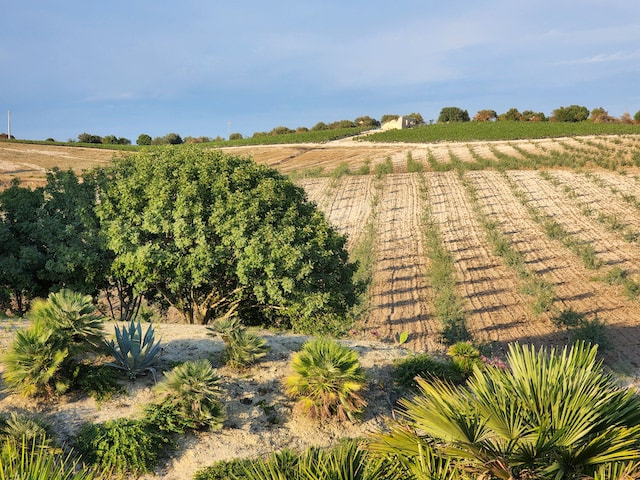
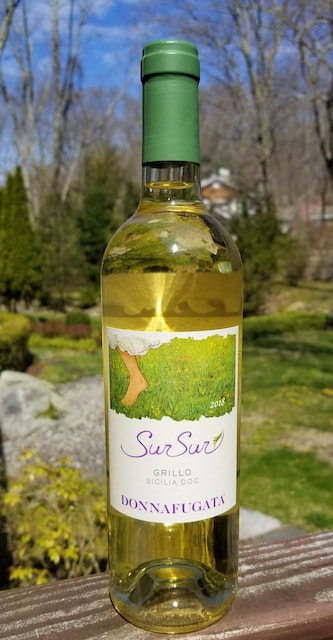
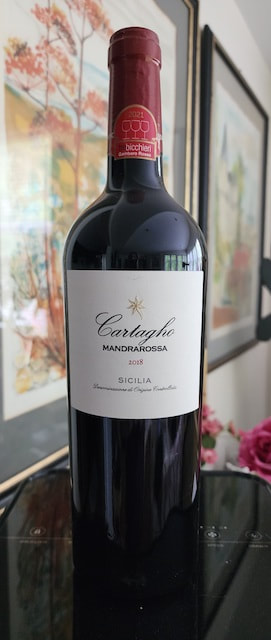
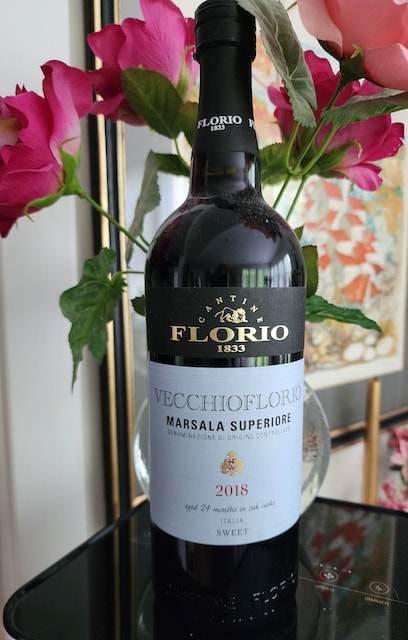
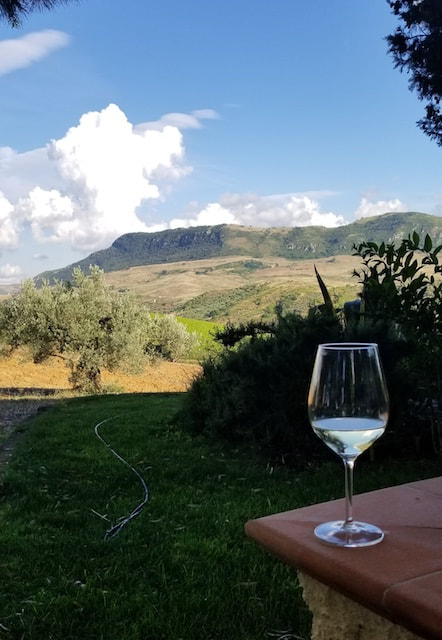
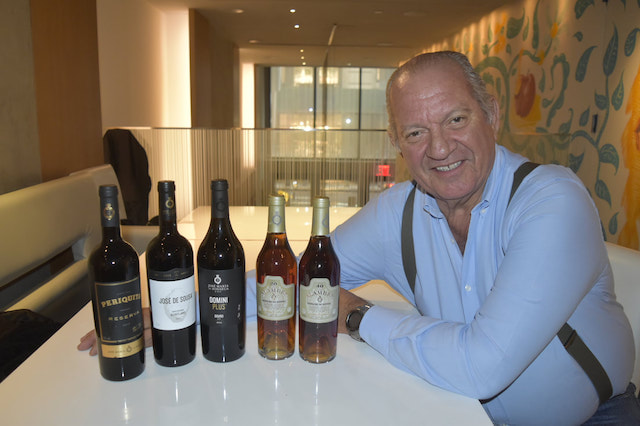
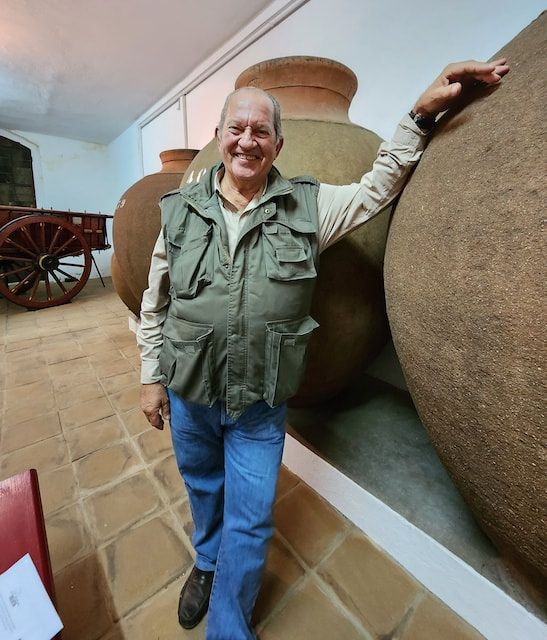

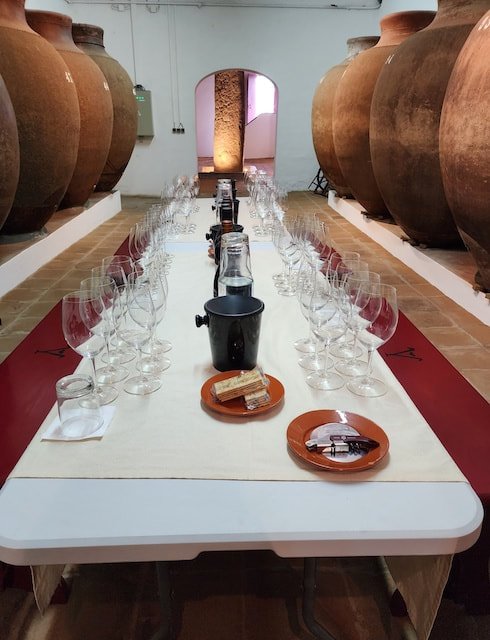
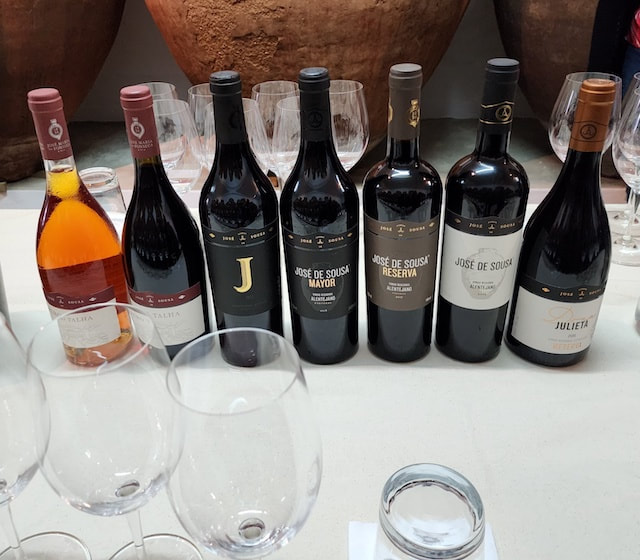
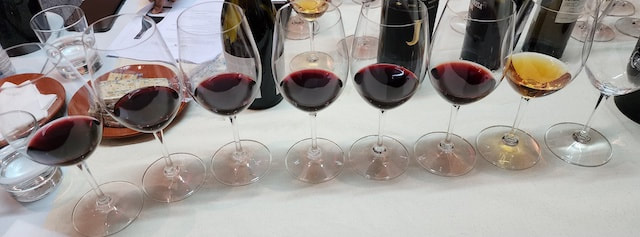
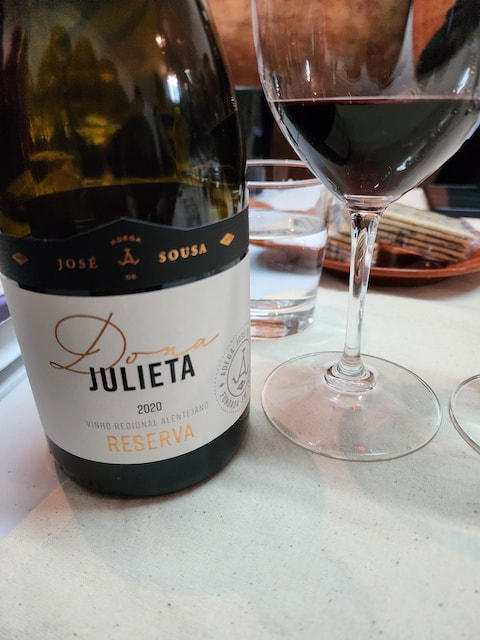
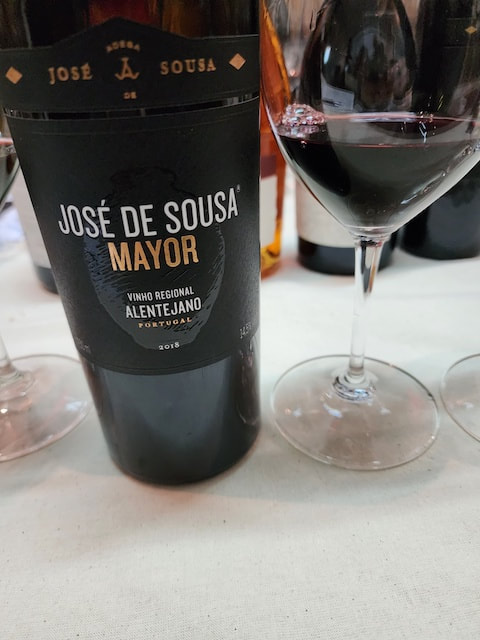
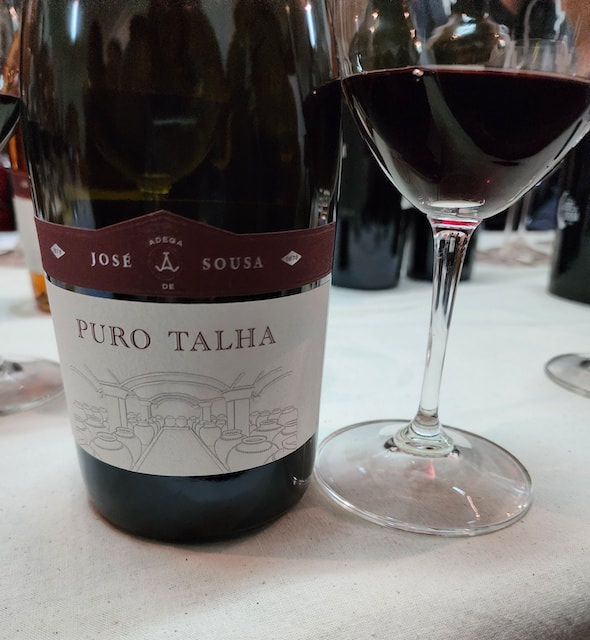
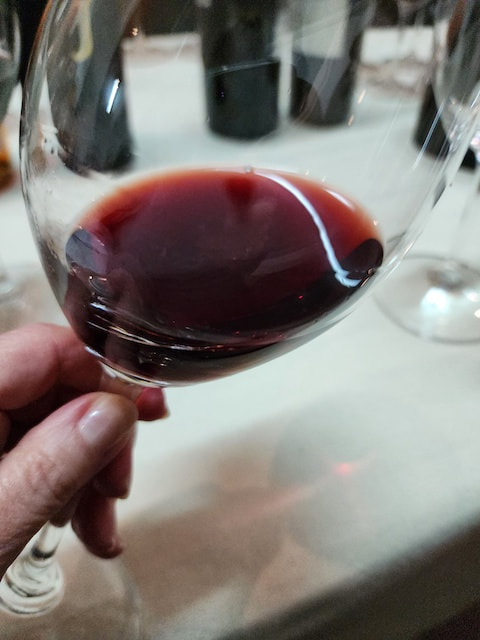
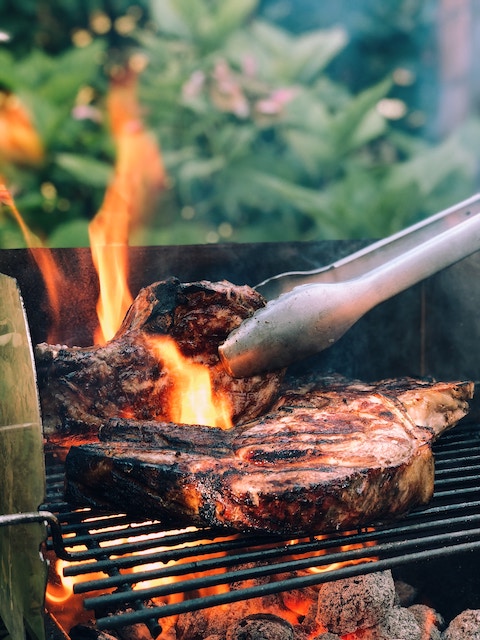
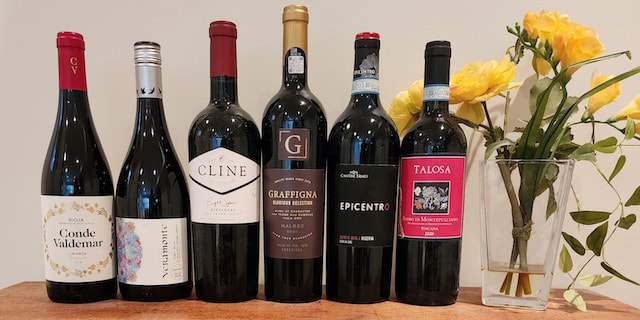
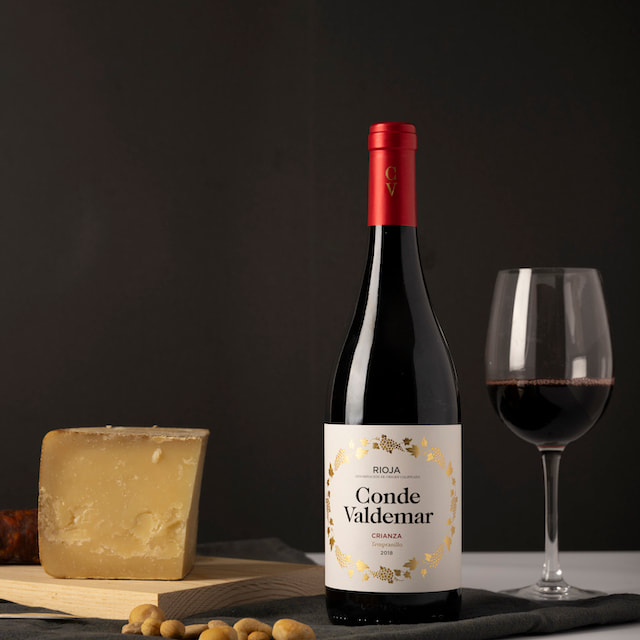
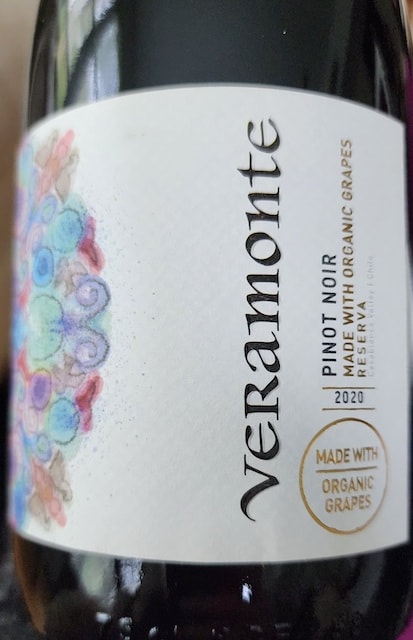
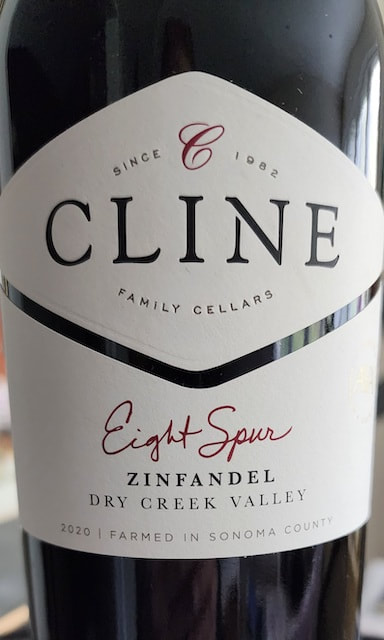
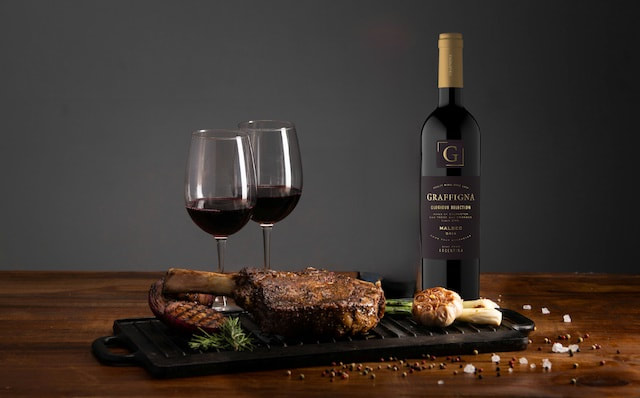
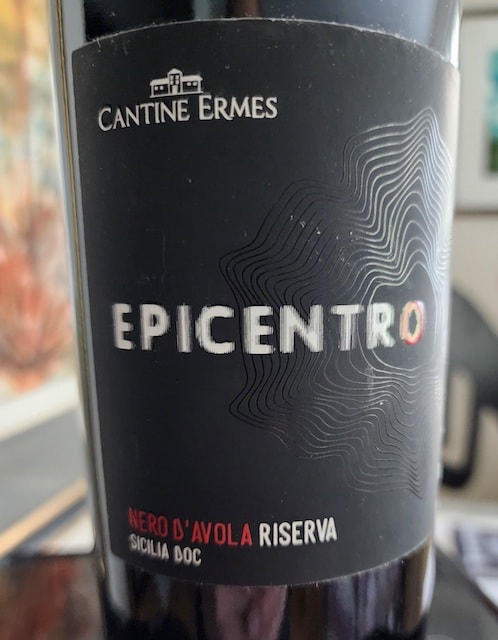
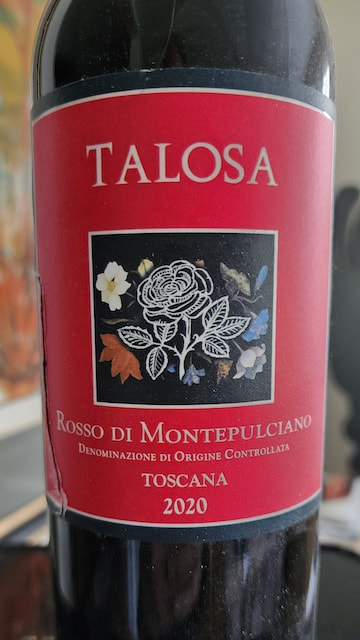
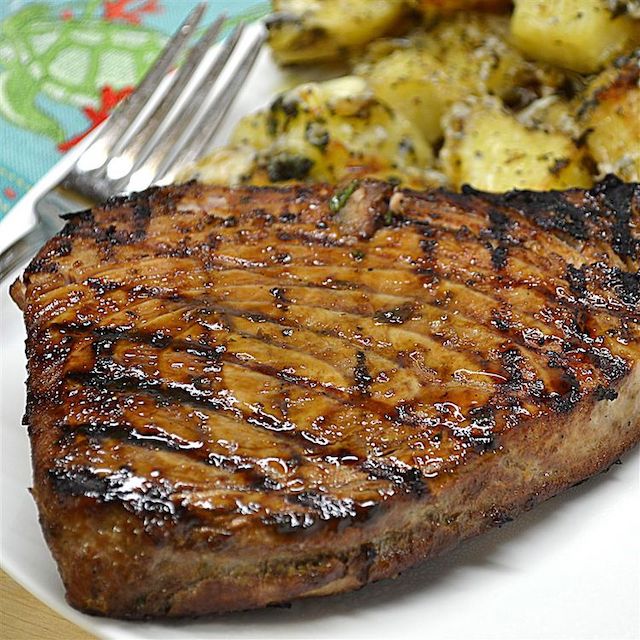
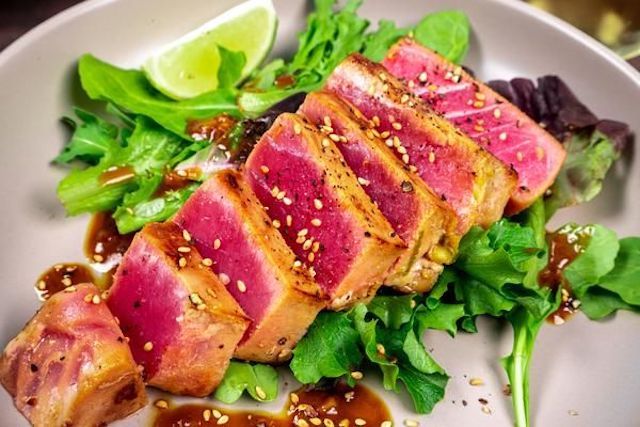
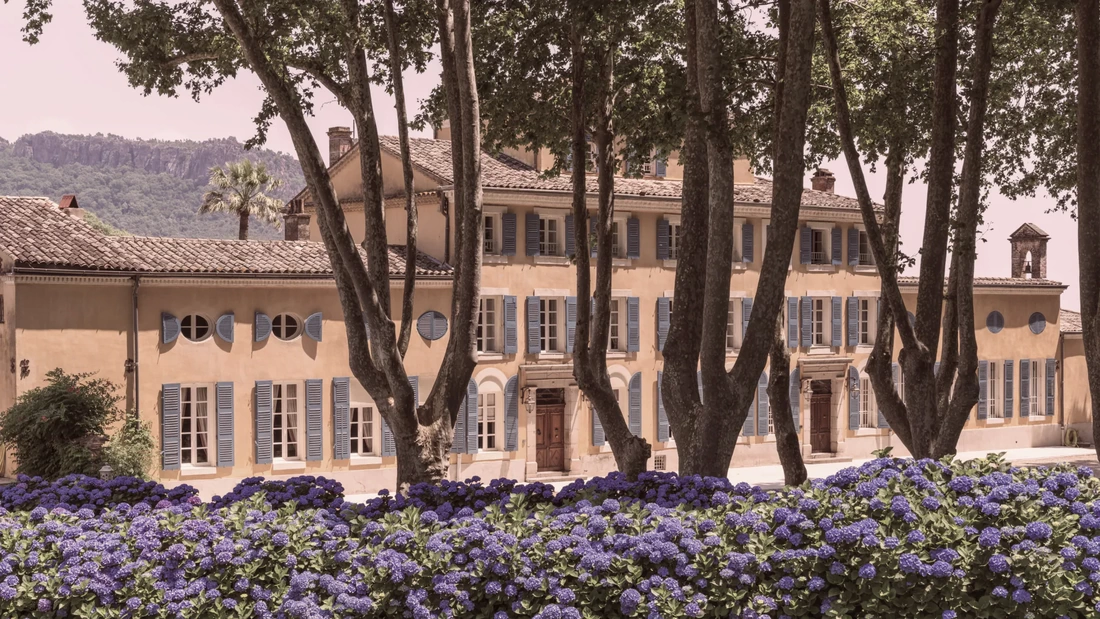
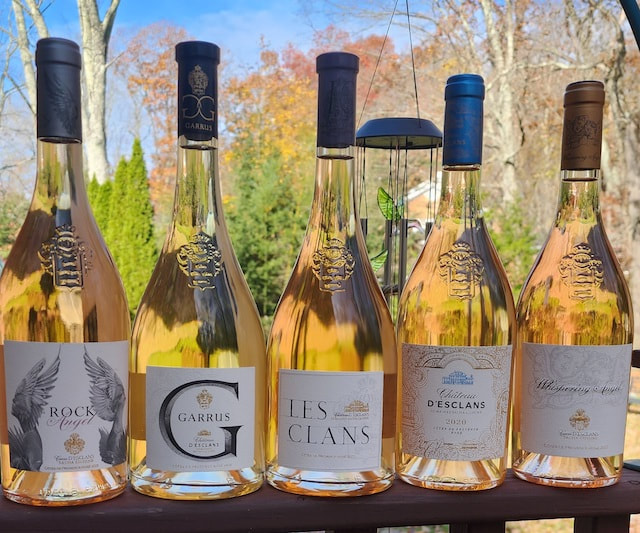
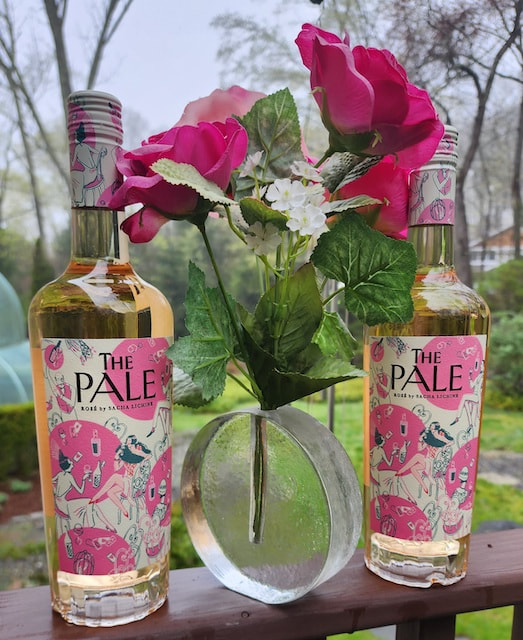
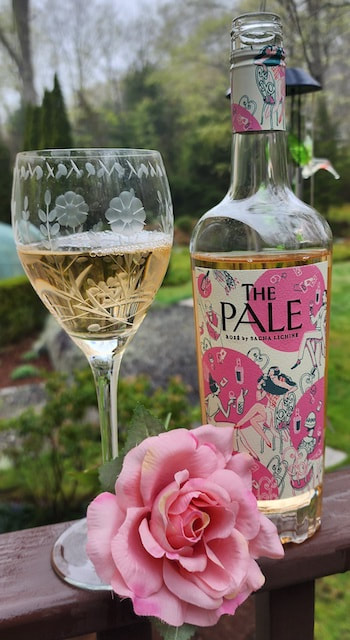
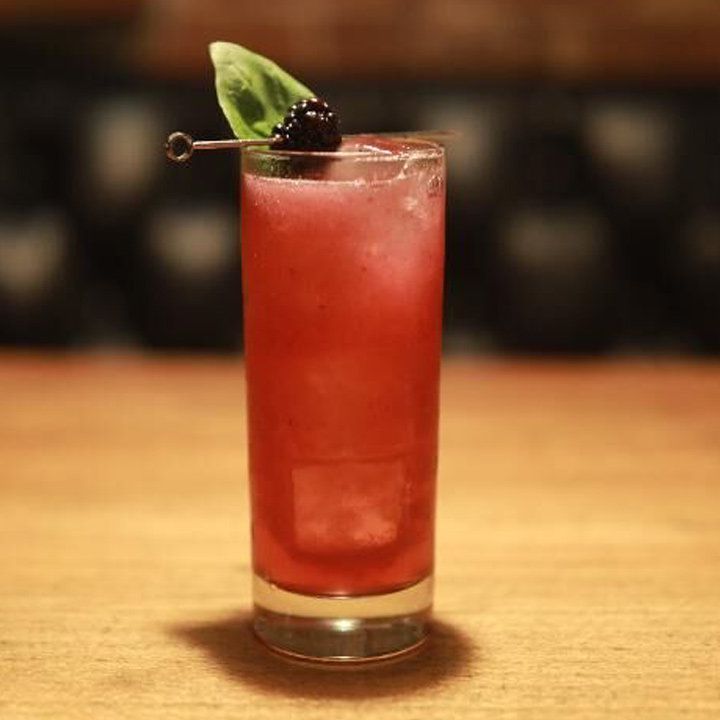

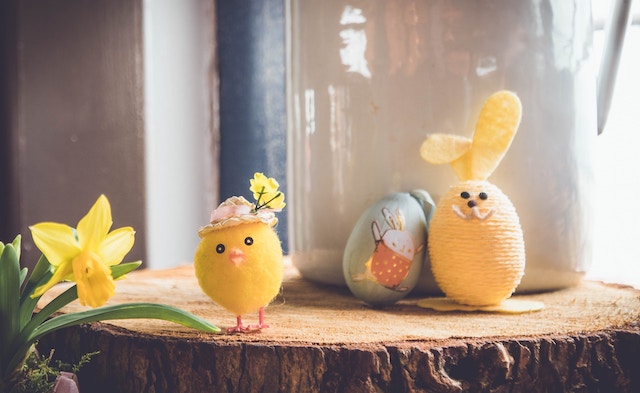
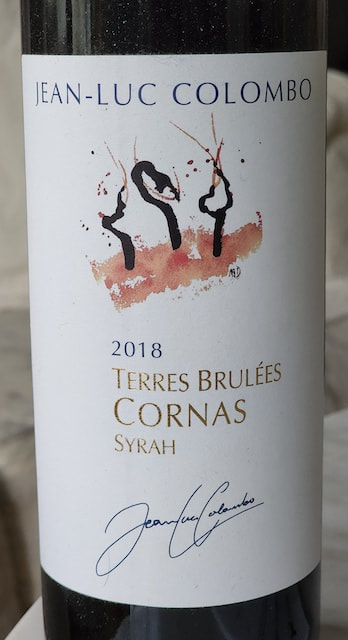
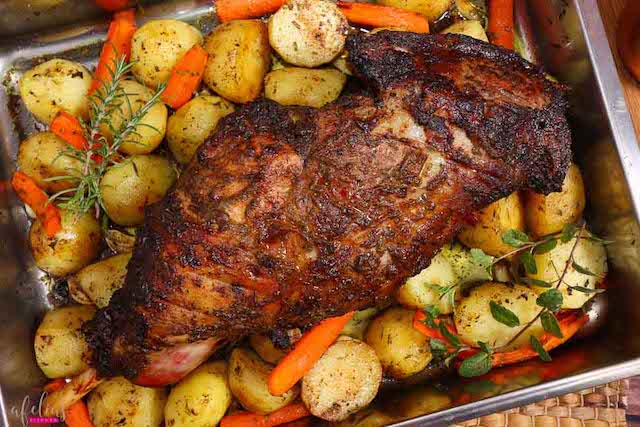
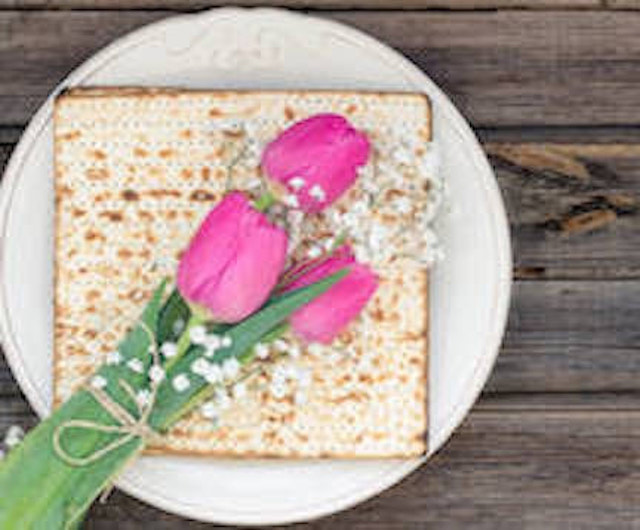
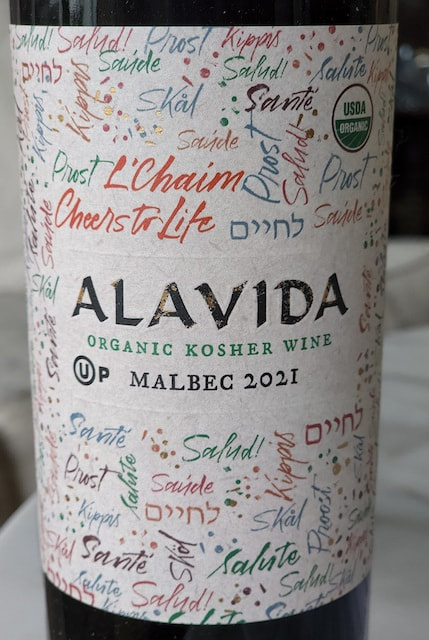
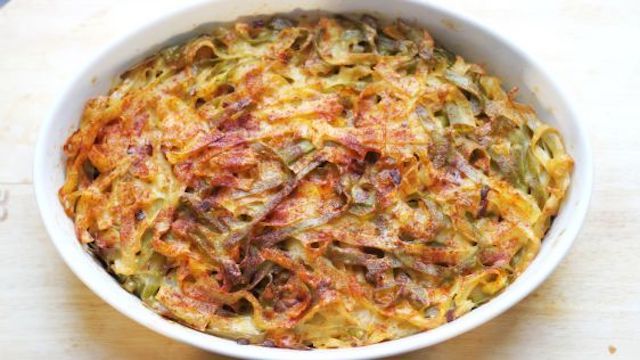
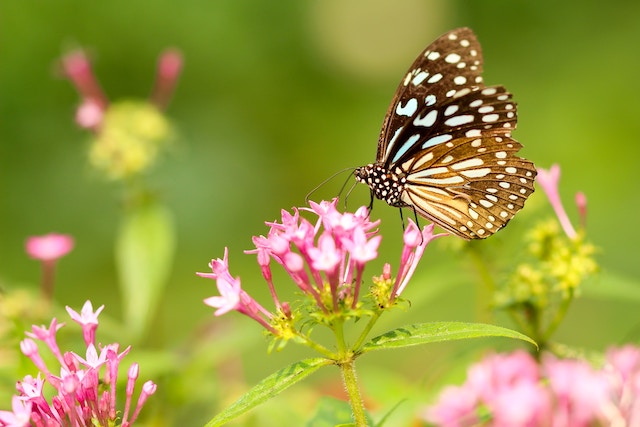
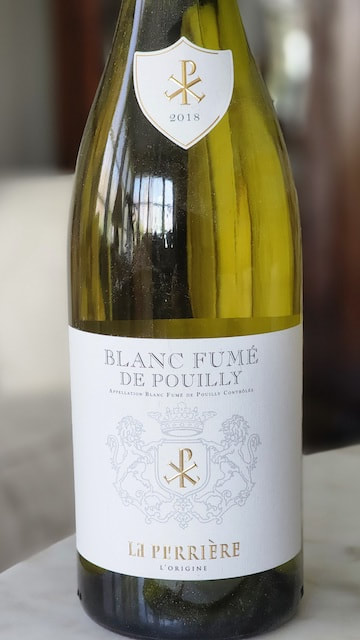
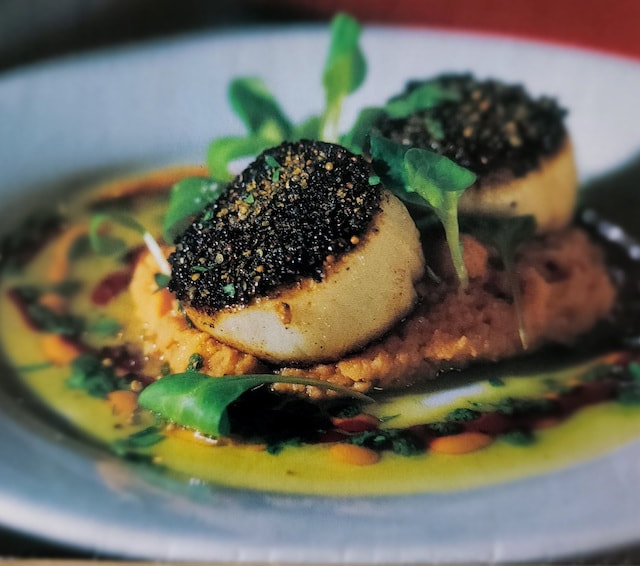
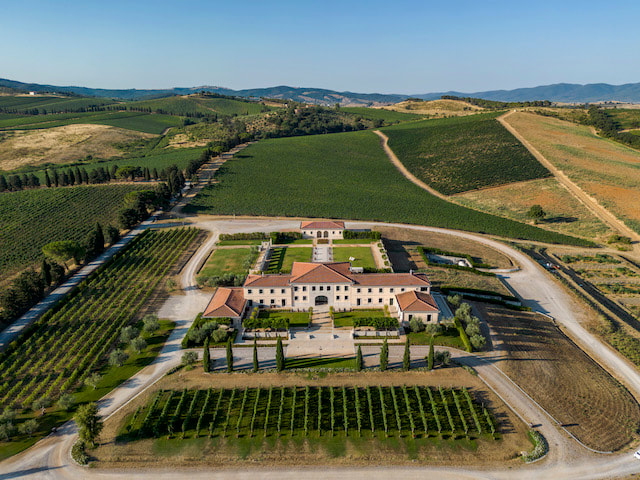

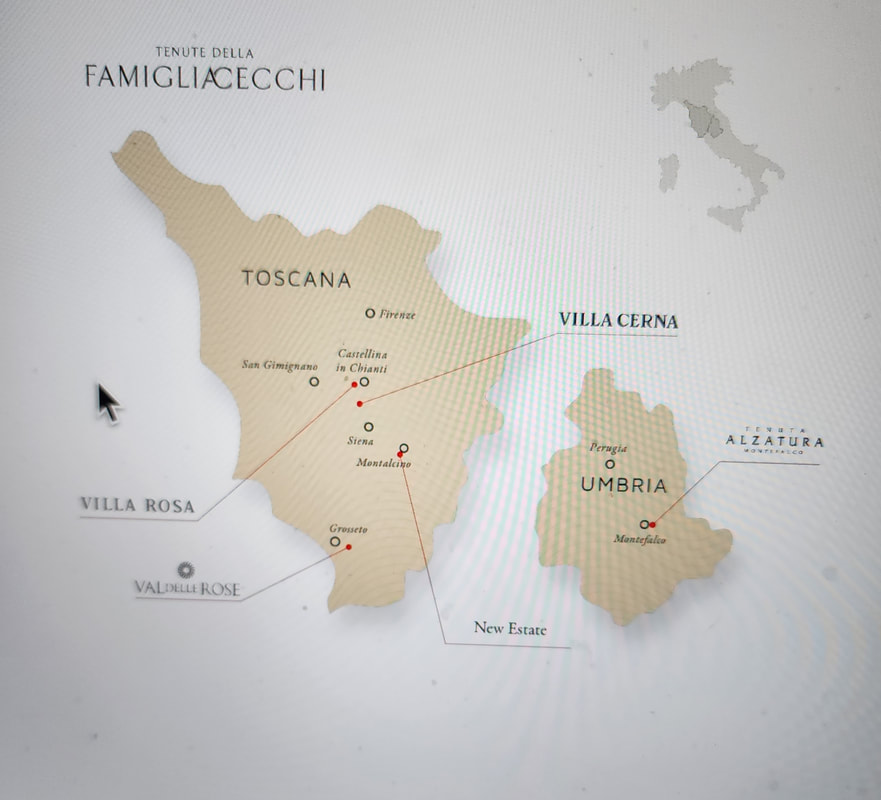
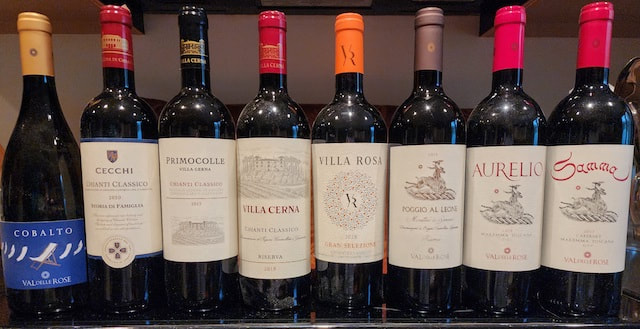
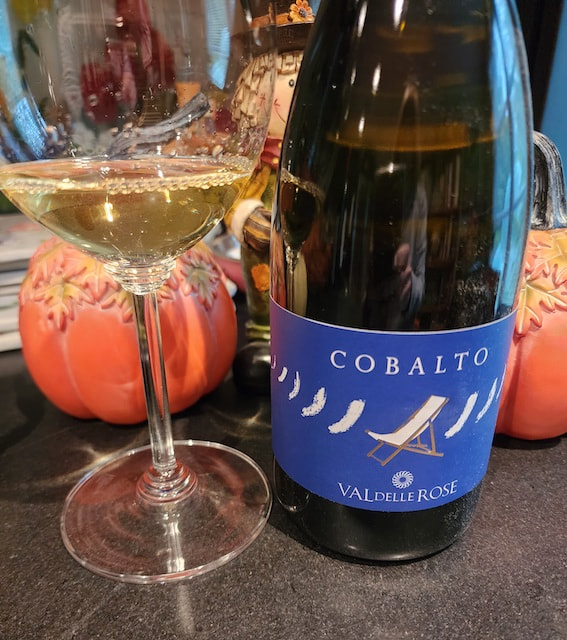
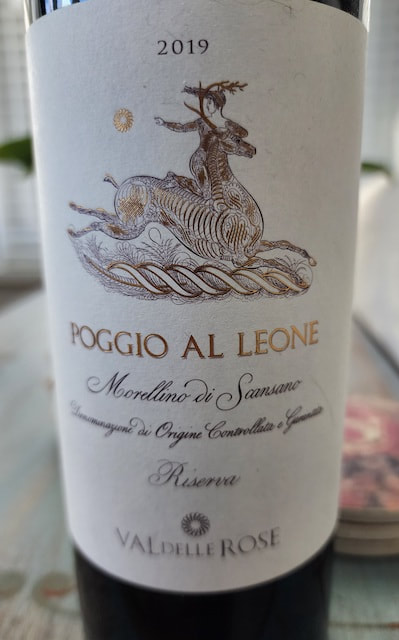
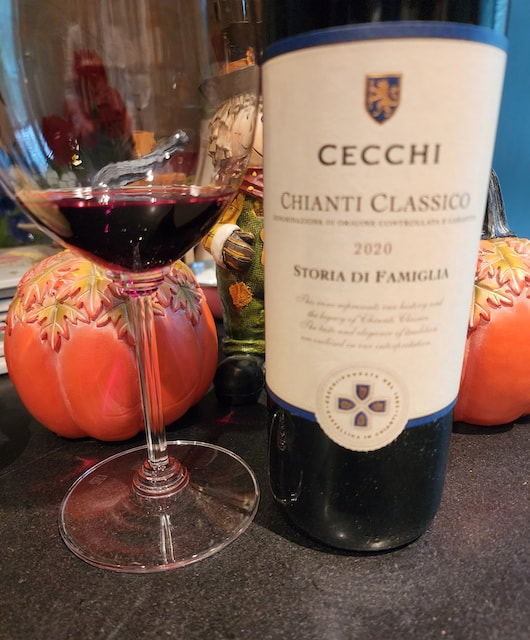
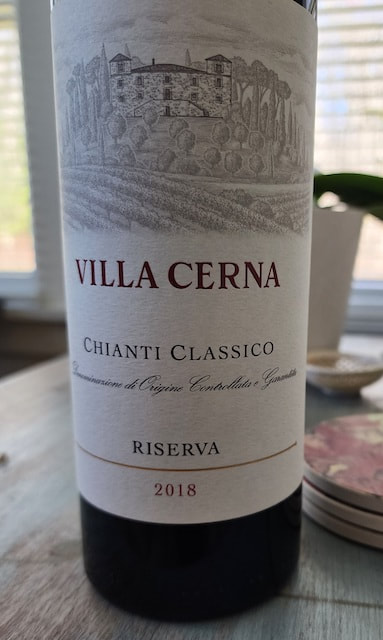
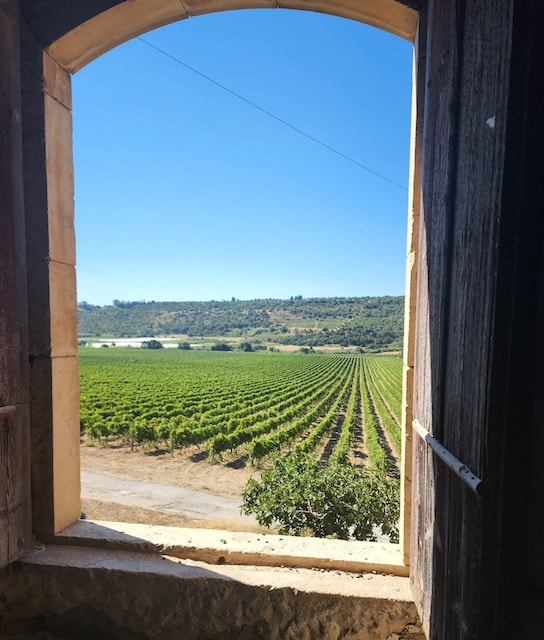
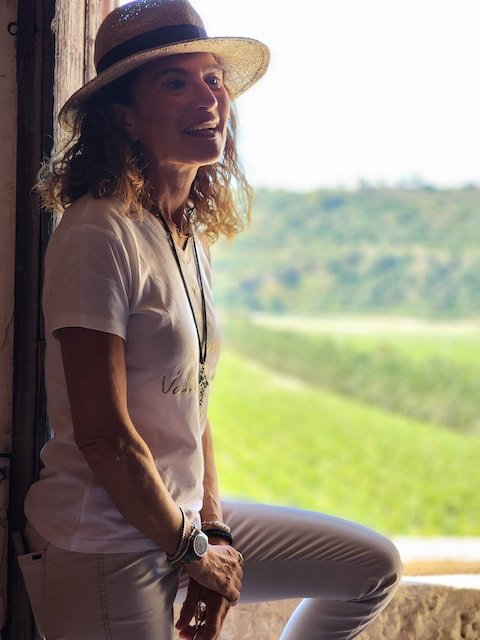
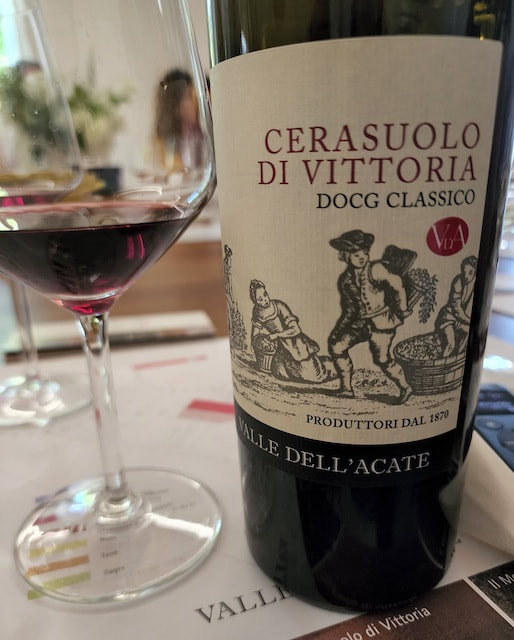
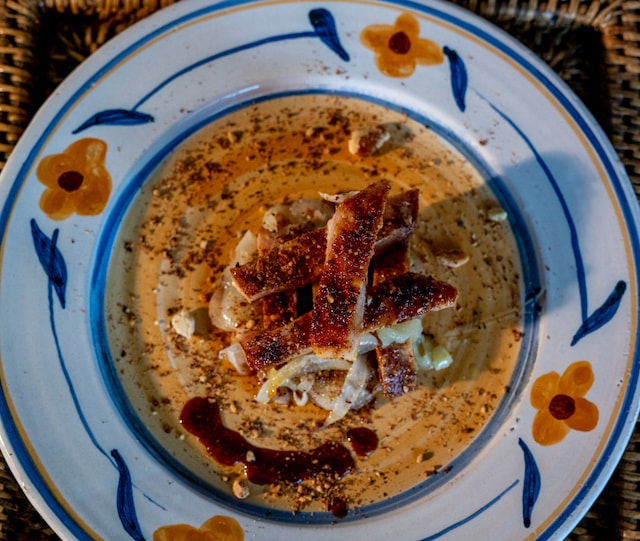
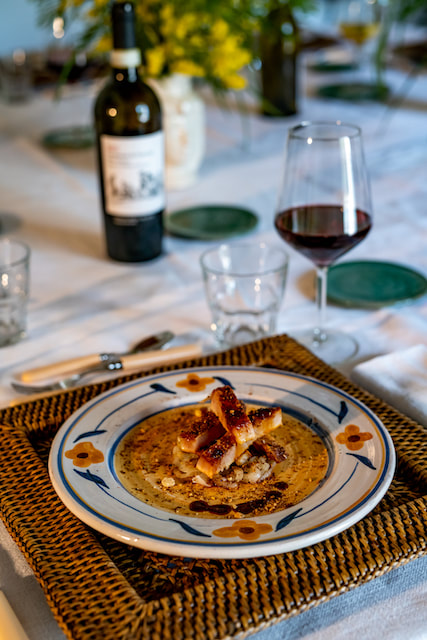
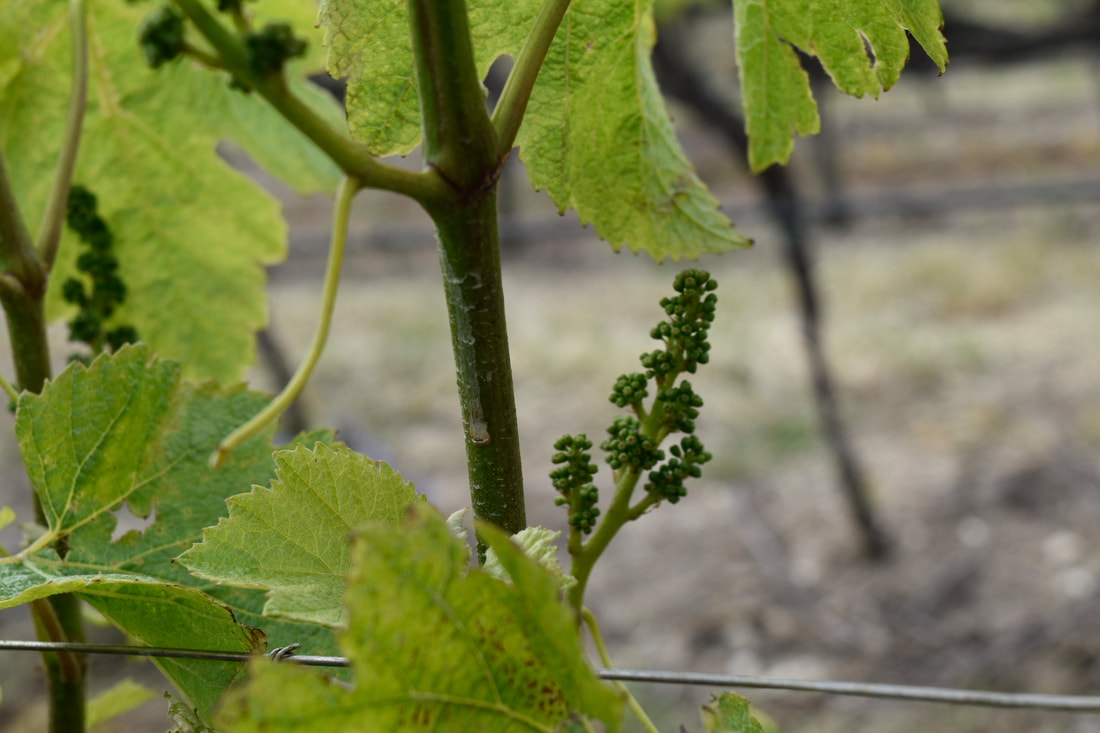
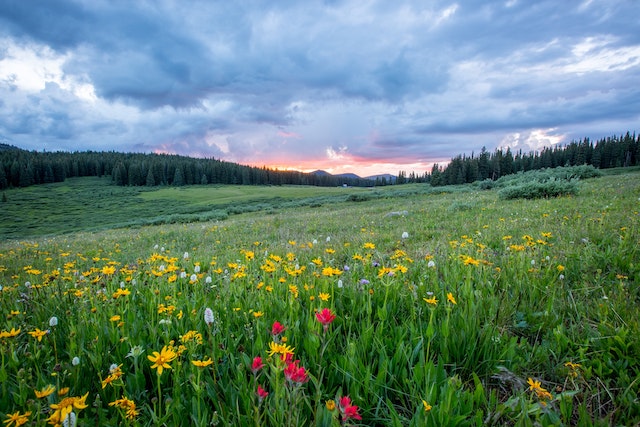
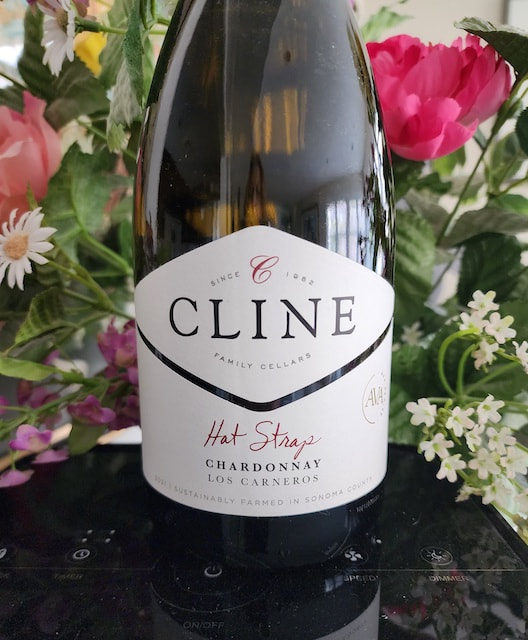
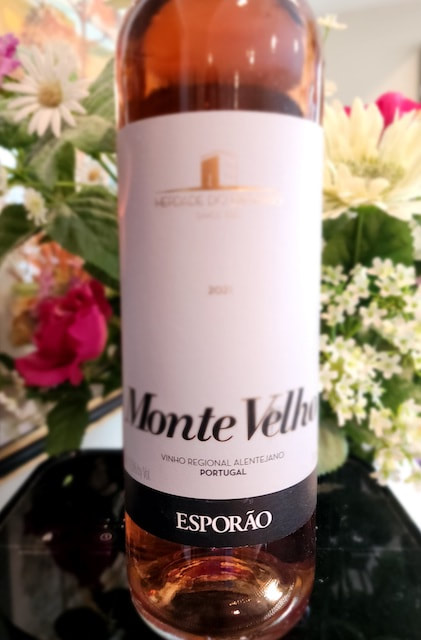
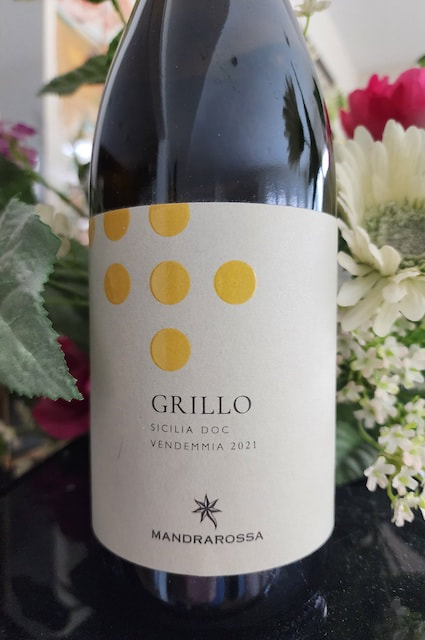
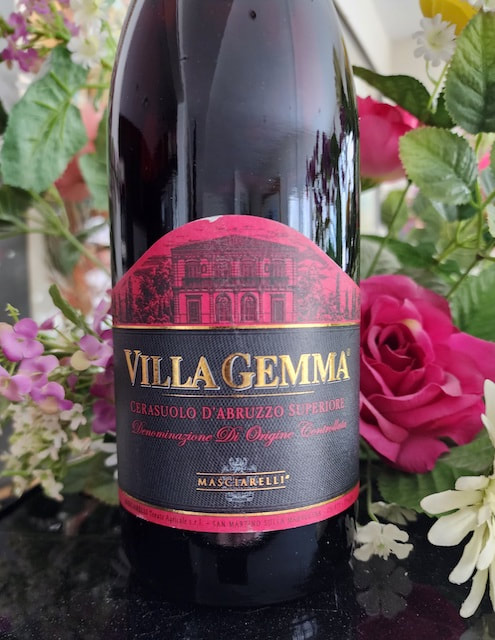
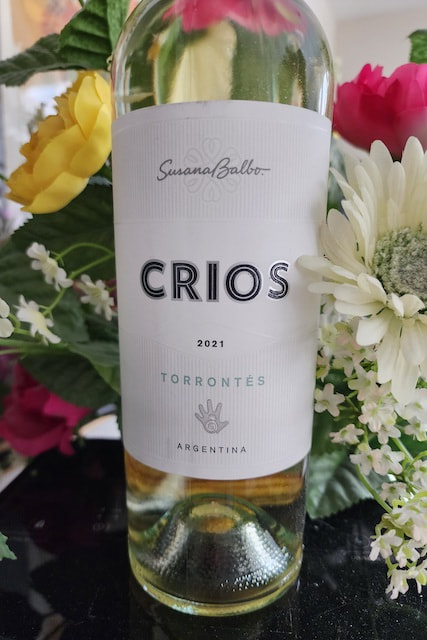
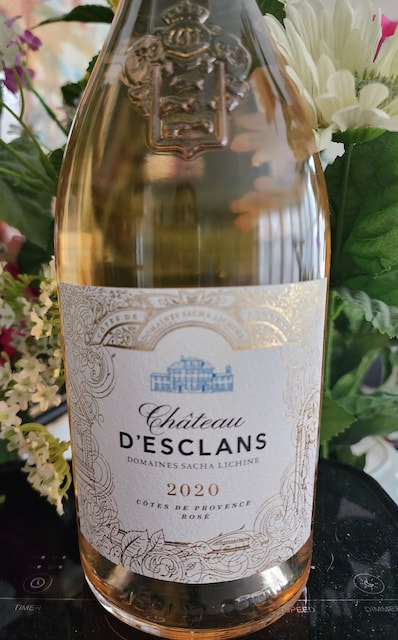

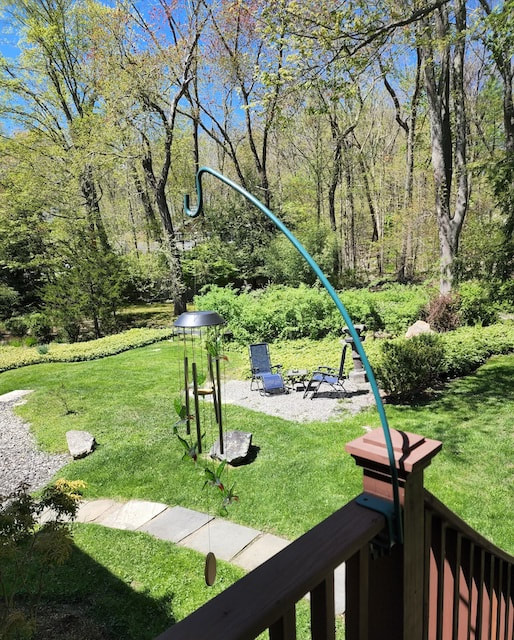
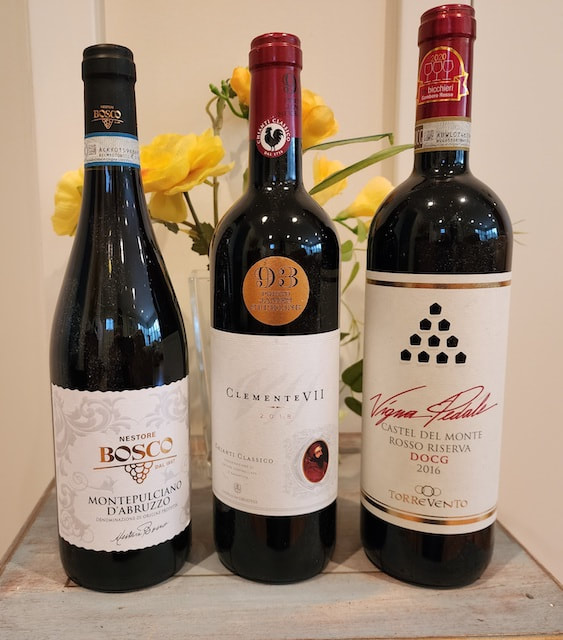
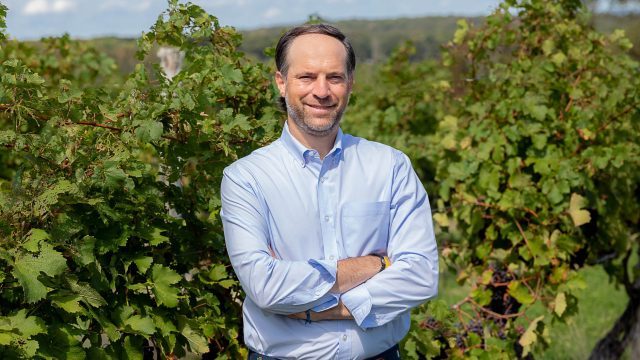
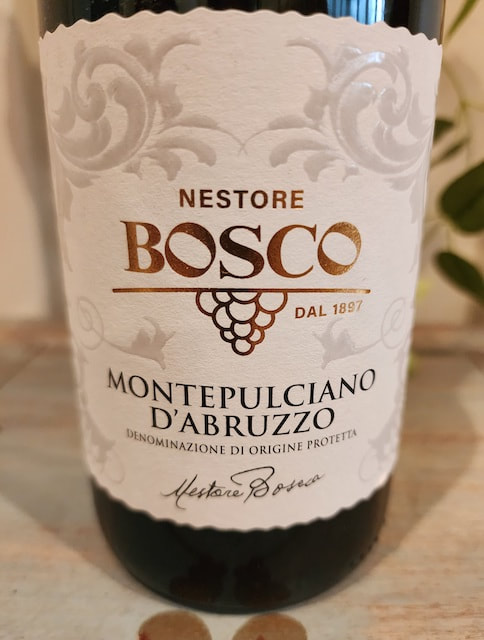
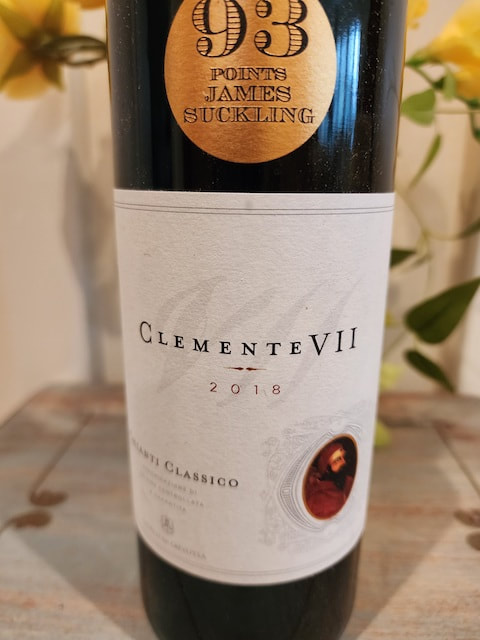
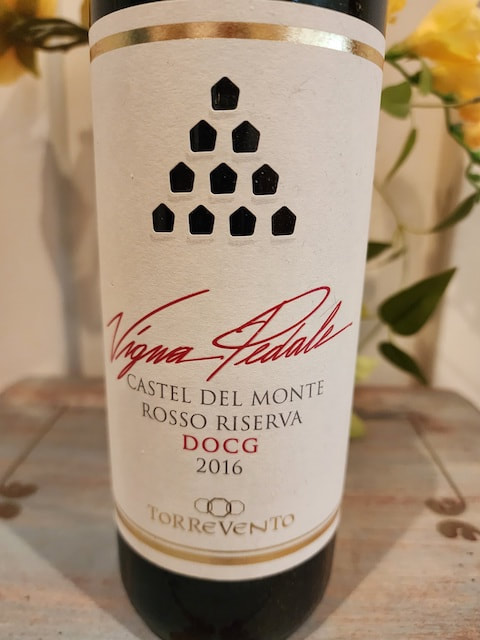
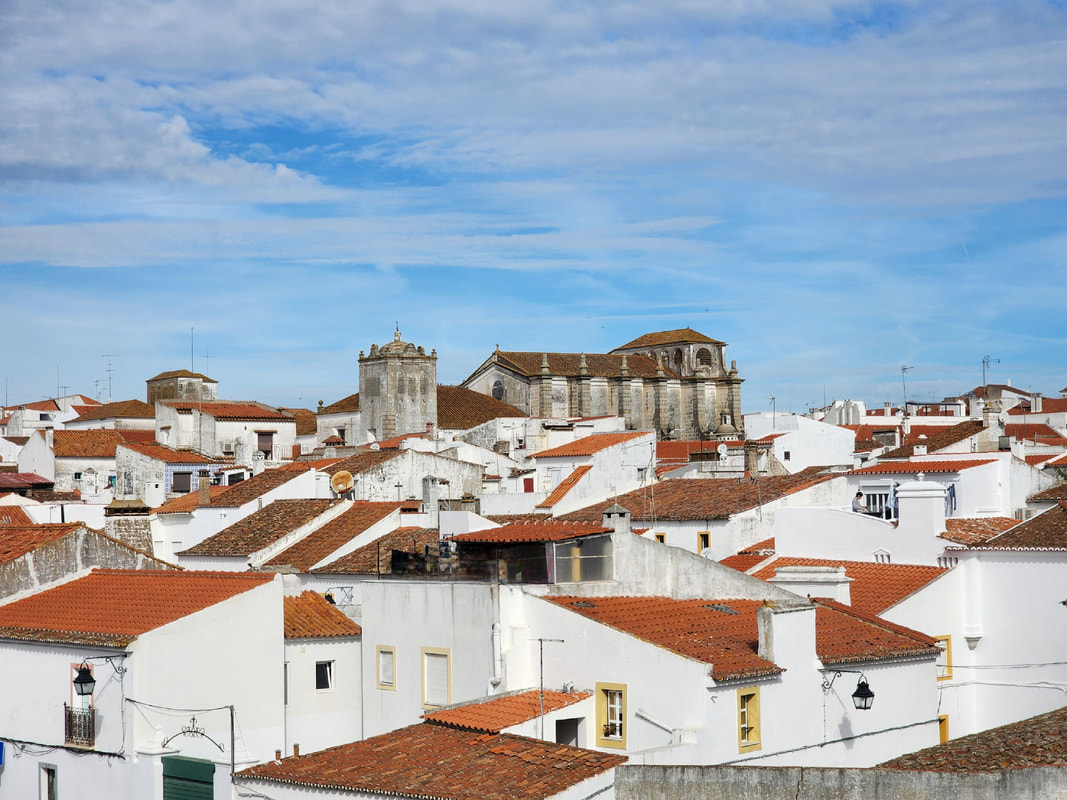



 RSS Feed
RSS Feed